Zadar
May 16-17, 2019
I have to admit, I knew nothing about Zadar. I had never even heard of it. But our travel agent had it on our itinerary for our tour of Slovenia and Croatia, so here we were. I just thought we were there to break up the drive from Ljubljana to Split. Boy was I wrong.
Zadar is on the Dalmatian coast, on the Adriatic Sea. It is known for its Roman and Venetian ruins, all centered in the Old Town area. We had spent the last few days in Slovenia (see that post), in the unseasonably cold and rainy weather, very unusual for May. That morning we visited the Plitvice Natural Park, most of which was closed due to flooding (see that post). And there too it was cold.
We left Plitvice, got back into the car with our driver Jan (pronounced Yan), and drove the few hours through the mountains, past huts selling local cheese and honey, past farmland, past a military museum.
We stopped to pay the toll a few times, as unlike the roads in Slovenia, these are not free. We passed a sign which read, in both Croatian and English, “Stop if you are tired.” I loved it!
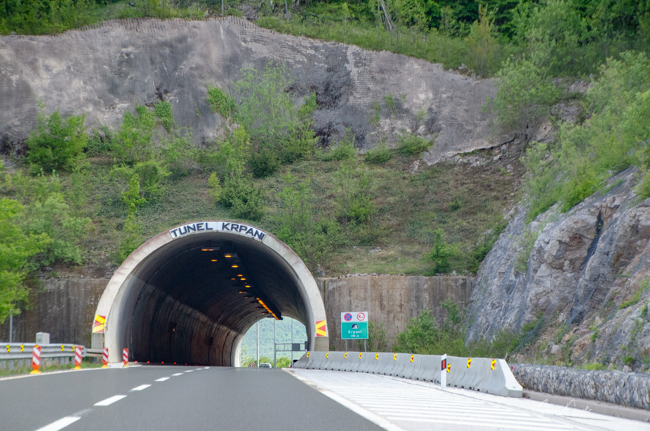 We drove through one tunnel after another. The longest was the Sveti Rok tunnel at about 3.5 mile. And then we crisscrossed the mountain making our way back down the other side.
We drove through one tunnel after another. The longest was the Sveti Rok tunnel at about 3.5 mile. And then we crisscrossed the mountain making our way back down the other side.
The mountains above us had peaks covered in snow and seemed pointier than the mountains in Slovenia. Trees were everywhere creating a green carpet.
And then, as we cleared the last tunnel, the sun appeared, the sky was blue, not a cloud was to be seen, and the Adriatic Sea was in front of us. I already loved Zadar.
A bit of history
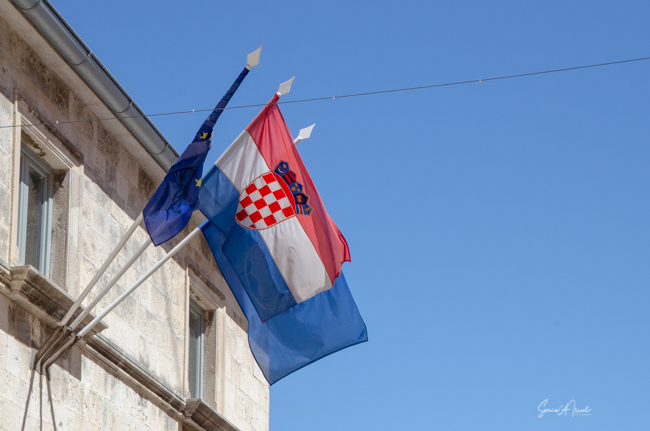 Zadar is the oldest Croatian city that has been continuously inhabited. It is a small city, under 10 square miles, but every bit is charming. Although small in land, it is the second largest city in Dalmatia and the 5th largest in Croatia.
Zadar is the oldest Croatian city that has been continuously inhabited. It is a small city, under 10 square miles, but every bit is charming. Although small in land, it is the second largest city in Dalmatia and the 5th largest in Croatia.
Like all of the Balkans, there is much history here, with traces of early life as far back as the Stone Age. The Romans had a great presence here before the common era when it was called Iadera. Remains of the Roman rule can still be seen throughout the town. More on this below. After the Romans, there were the Byzantines, then Frankish rule briefly, and back to the Byzantines. The first Croatian rulers did not gain control until the 10th century and then, only briefly. The Republic of Venice became rulers here in 998 until 1186, when it acme under the protection of Hungary. This lasted about 20 years and then the Venetians were back. And then the Hungarians again. Back and forth. Back and forth. But it was the Venetians who fostered an environment of art and literature and the Renaissance. Many famous Italian Renaissance figures started out here in Zadar. This all ended in 1797 when Zadar came under Austrain rule, with a brief stint of the French. And then in the 19th century, Zadar was the center of the Croatian movement for culture and national revival. In 1920, Zadar was given to Italy. This led to both good and bad. During WW II Zadar was severely bombed by the Allies (see below). But as we also learned, it was the Italians that gave Zadar everything good.
Zadar became an official part of Croatia in 1947 and today is the historical center of Dalmatia.
The drive into town
Jan drove into town and we marveled at the beauty of the sea, the yachts docked around, the people milling about. He made a circular detour to show us the Greetings to the Sun. I had no idea what that was, but I could see groups of people sitting or kneeling on what looked like a large glass circle. Jan said something about listening to the waves, but still, I had no idea.\
Hotel Bastion
We drove back to the hotel and Jan dropped us off. Philip greeted us to the Hotel Bastion, overlooking the sea and the yachts. I asked for a room with a view and we got just that. We were on the third floor, room 304, and our view was spectacular.
Once we had dropped off the luggage and settled in a bit, we came back to the front desk to get a map and suggestions on what to see and what to do on our free afternoon. Philip, who was extremely friendly, talkative (in a good way) and knowledgeable, grabbed a map and began to tell us all about the town, where to go and some of the history. He was born and grew up here as did his parents and grandparents. He showed us where the Roman ruins are. He explained that there was once lots of Italian architecture buildings but they were all bombed by the allies during WWII, although there was no military presence here. But it was in an attempt to get at the fascists. Why Italian buildings and why Italian restaurants all over Zadar? Philip explained that Zadar was part of Italy for many years, on and off (more on this history later). He told us that everything that that is good in Zadar was from that Italian period. Everything they have that is good is from then. For example, he said, his grandfather‘s bicycle. And as he continued to show us spots around the map, he was sure to circle the supermarket because that’s where his grandmother, who is retired, now works. That showed strong family ties. Another Italian trait (and Jewish and Chinese and many other cultures. Probably Croatian now too!).
The hotel is modern in almost a deco style. The room was large with a two-seater couch, a desk and chair, robes, slippers, a large shower with both a hand-held and a rainfall spout. The amenities included razors and toothbrushes. The window opened so you could get fresh air and take pictures without the glass in the way. Breakfast was the usual buffet with cheeses, meats, fruit, cereal, yogurt, breads. But there was also a menu for eggs and crepe. Andy had a crepe with marmalade (although he could have had one with chocolate). The hotel is very convenient to everything in Old Town.
And at night, when back in the room, we watched the lights come on. And then the sun rise the next morning.
Our walk about
And so, with map in hand, we started our walk around the Old Town, which is a total pedestrian mall. No cars allowed. This walk was just to get our bearings and see some of the sights as we had the afternoon free. The next morning we had a guided walking tour with Tamara, a native of Zadar. What follows in a combination of our two walks.
Greetings to the Sun
Our first afternoon began by walking along the water, first past the Greetings to the Sun. We still had no idea what it was. We saw a group of tourists with a guide so we sidled over and listened. She was explaining that the large circle of solar panels represented the sun and then each additional circle represented the planets. There were people reclining on top of the panels and there was a bride and groom taking wedding photos.
Only that night when we returned to the hotel after dinner, right before sunset, did I find out what it really was. The large 72-foot circle is set into the pavement and filled with 300 multilayered glass plates that collect the sun’s energy during the day. At night, between sunset and sunrise, it becomes a light show meant to simulate the solar system. And the lights dance in rhythm with the waves below it. All that energy is also used to power the entire harbor front lights. I also found out, too late, that the sunsets in Zadar are considered the best in the world. In 1964, Alfred Hitchcock visited Zadar, and while sipping Zadar’s famous cherry liquor, maraschino, he declared, “It must be the most beautiful sunset in the world!” And we missed it. Note to self – read and learn about a place before you visit.
Sea Organ
Right next to the Greetings to the Sun are some stone steps at the water’s edge. This is the Sea Organ. Both the Greetings to the Sun and the Sea Organ were designed by the local architect Nikola Bašić. Within the stone stairs is a system of 76 yards of 35 pipes, each of different lengths. The waves push air into the pipes creating music which comes out of holes in the ground. It works the same way a flute does. The more waves there are, from the wind or from passing boats or ferries, the louder the music. We sat for a bit listening to the wistful sighs. The tones changed in pitch and in volume. It was almost hypnotic.
After a bit, we forced ourselves to stand up and continue our walk.
The Man on the Shore
We walked along the water and came upon a statue of a man holding a shell. It was Spiridon Brusina, a Croatian naturalist, educator and invertebrate zoologist who studied mollusks.
University of Zadar
We stayed by the water, walking around the University, The current University of Zadar was founded recently, in 2002. But the original university was founded by the Dominicans in 1396 which makes it the oldest tertiary institution in Croatia and one of the oldest in Europe. As we walked around the walls of the University, along the harbor, admired the reliefs, and headed up to the Land Gate.
Land Gate
The Land Gate, which sits above the Foša harbor, was once the main entrance for Zadar. It was built by the Venetians in 1543 and has one huge triumphal arch in the center with two smaller arches on either side. At the top of the main arch is a sculpture of the winged lion of St. Mark, (the coat of arms of the Republic of Venice), which acts as a reminder of Venice’s long rule over Zadar. And just under the lion is what looks like a very small, ugly man on an ugly horse. That is Chrysogonus, Zadar’s patron saint. Tamara explained that this was the Venetian’s way of saying to the inhabitants of Zadar, “You are stupid and ugly and we are strong and brave and wonderful and are your rulers.”
City walls of Zadar
Right by the Land Gate, and all around parts of Zadar are remnants of the old city walls. The walls were originally built as a defense a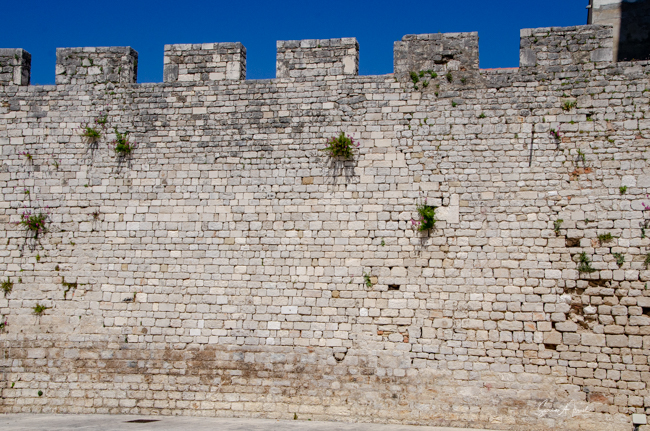 gainst the Ottomans. At one point, due to these walls, Zadar was the largest city-fortress in the entire Republic of Venice. The walls also saved them from being captured by the Turks. The original walls, which can still be seen in parts of the Old Town, were deemed to be too thin and so a new set of thicker walls were built surrounding the old walls. Now only pieces of each remain.
gainst the Ottomans. At one point, due to these walls, Zadar was the largest city-fortress in the entire Republic of Venice. The walls also saved them from being captured by the Turks. The original walls, which can still be seen in parts of the Old Town, were deemed to be too thin and so a new set of thicker walls were built surrounding the old walls. Now only pieces of each remain.
Five Wells Square
In the Middle Ages there was a defensive ditch, or moat, below the old city walls. Later, during the 16th century, the Venetians helped Zadar withstand Turkish sieges by building a large drinking water cistern with five ornamental wellheads. And thus the name of this square, Five Wells Square. These wells supplied Zadar with water until 1838. The wells no longer provide water, but rather are a place for skateboarders to practice their skills. We had to dodge them as we walked around. But that was easy to do as the square is now totally empty except for the wells, belying the fact that this was once a military storage facility or bastion.
Oldest Park in Croatia
On top of the medieval city wall and the Five Wells Square and the Grimaldi Bastion, there is now a park that was full of children playing and couples strolling and tourists taking selfies. The park was founded by an Austrain Baron Franz Ludwig von Welden in 1829, which makes this the oldest park in Croatia. It was also the first public park in Croatia. The Baron was a passionate botanist and in planning the park, he made sure there were plants from every continent (well, maybe not Antarctica).
Captain’s Tower
In one corner of the Five Wells Square, there was a large pentagonal tower, the Captain’s Tower, named after the nearby residence of the city captain. We opted not to climb to the top, although I am sure the view would have been wonderful. This is the last tower left, leaning against the old City Walls, of the original 10 towers that were on the margins of the medieval city. It was built by the Venetians to strengthen the city again Turkish attacks.
Narodni trg
We left that square, Trg Petra Zoranica, walking past the Egyptian obelisk and down the main street, Siroka Ulica, ending up at the main square, Narodni trg, also called People’s Square. This square was once the center of public life, and is still the most popular square. It is surrounded by the City Guard building in the late-Renaissance style, the Clock Tower, the Church of St Peter and the Church of St. Lawrence.
People were everywhere, strolling, having drinks in cafes, eating ice cream. We suddenly heard music and saw two gentlemen in traditional Croatian dress, standing at a microphone singing. And next to them were a group  of women and men, also in traditional clothing, waiting to dance. It was a festival of leather – or something like that. One of the men was playing an instrument make all of leather. After a few songs, the dancers came out and invited those in the crowd to join them. I joined in but there is no video of that. Just a video of everyone else.
of women and men, also in traditional clothing, waiting to dance. It was a festival of leather – or something like that. One of the men was playing an instrument make all of leather. After a few songs, the dancers came out and invited those in the crowd to join them. I joined in but there is no video of that. Just a video of everyone else.
Church of Saint Dominicus
We kept walking and found ourselves in the district of Varos. This is the historical part of Zadar (as far as I could tell, it was all historical), once called Babe. It is where the poor people lived in wooden houses. When it was time to build the Forte Fortress, all these homes were torn down. The next se t of inhabitants built stone homes. Instead of a grid layout like the Roman forum, this area was constructed more like a medieval town resembling a comb, with one main axis north south with smaller parallel streets running at right angles, east west. There were two churches here, both destroyed over the years. A few ruins of one of the churches, The Church of Saint Dominicus, can be seen at ground level, in the shape of a cross.
t of inhabitants built stone homes. Instead of a grid layout like the Roman forum, this area was constructed more like a medieval town resembling a comb, with one main axis north south with smaller parallel streets running at right angles, east west. There were two churches here, both destroyed over the years. A few ruins of one of the churches, The Church of Saint Dominicus, can be seen at ground level, in the shape of a cross.
And it was right next door to dinner.
Bruschetta
Yes, it was time for dinner. Philip at our hotel has recommended a restaurant named Bruschetta. Again, Italian. So after our walk around the town, we tracked it down. It had a large outdoor seating area overlooking the sea. We checked out the menu. We had had a large lunch and were in the mood for pizza. I looked over the menu and to my disappointment, no pizza. So I handed it back to the maître d’ and sad, “Sorry. You don’t have pizza?” And she said, “We do, but it is on the last page, not in the front with the rest of the menu.” Great! She showed us to a table that was inside, but at a large open wall so it was as if we were outside. I had a glass of Croatian Sauvignon Blanc and then Andy and I shared a pizza. Oh, and of course we had the traditional bruschetta. It was the best bruschetta I’ve ever had. And the pizza was as good as in Sicily.
Prom
We walked back on the main street, Široka ulica and heard all sorts of shouting and music. There was a large group of young adults, the women dressed in long gowns and the men in suits and ties. They were yelling and singing, accompanied by a guitar. The marched down the street having the best time. I assumed it was a wedding, but no, it turns out they had just graduated and this was their prom.
They made their way to a hall right next door to our hotel, so we got to watch them having a grand old time.
Riva
The next morning, Tamara, our guide, met us in the lobby of our hotel and we began our official walking tour. (Note: if you want a great guide, here is Tamara’s contact info: [email protected]) We started by walking down the promenade at the water’s edge. The promenade, called Riva, is a favorite spot for the locals. There are even songs written about it. Today it has green parks with flowers and palm trees. But in the past it was lined with Renaissance homes and city walls which blocked the ocean air. After the Allies attacked and all those homes were destroyed, the city decided to built parks instead which let in the light and the air. Now it is filled with cafes and benches (which were all being painted in preparation for high season) and parks and people sitting and enjoying life. As Tamara explained, Dalmatians like to enjoy life. Others may call them lazy, but they enjoy being easy going. Their favorite pastime is sitting and drinking a large macchiato. And their favorite expression? If you can do it today, leave it for tomorrow.
Roman Forum
 We walked past a flea market of stalls with souvenirs and stalls with flea market type antiques – everything from records, porcelain statuettes, jewelry, tools and even old guns. And just to the side of the market was the Roman forum. It seemed almost random to see it as the large plaza was filled with pieces of Roman columns, all taken from other parts of the city and placed here as a museum. The Forum itself was commissioned in the 3rd century by the first Roman Emperor Augustus whose name is inscribed in stone. It was one of the largest in the Adriatic at 147 feet x 314 feet. It was the center of all public life, both civic and religious. It must have been magnificent with three sides closed by a two-story building with colonnades and the upper level open to the temple of Jupiter, Juno and Minerva (see below). We could also see the foundations of what once a row of shops. Just about everything was destroyed in a large earthquake. Some of the original pavement remains. And one pillar of shame.
We walked past a flea market of stalls with souvenirs and stalls with flea market type antiques – everything from records, porcelain statuettes, jewelry, tools and even old guns. And just to the side of the market was the Roman forum. It seemed almost random to see it as the large plaza was filled with pieces of Roman columns, all taken from other parts of the city and placed here as a museum. The Forum itself was commissioned in the 3rd century by the first Roman Emperor Augustus whose name is inscribed in stone. It was one of the largest in the Adriatic at 147 feet x 314 feet. It was the center of all public life, both civic and religious. It must have been magnificent with three sides closed by a two-story building with colonnades and the upper level open to the temple of Jupiter, Juno and Minerva (see below). We could also see the foundations of what once a row of shops. Just about everything was destroyed in a large earthquake. Some of the original pavement remains. And one pillar of shame.
Pillar of Shame
Just in front of the wall of the temple, at the edge of the square, there is one intact Roman column. Back in the Middle Ages, this pillar stroked fear in heart of any wrongdoer. This was the pillar of shame, a place of punishment. Anyone who stole, or killed or was a troublemaker, was chained to the pillar and publicly humiliated, mocked and even whipped. The whole city would come by and watch this public spectacle. It is said that in this way, the people of Iadera stayed honest.
Temple of Jupiter, Juno and Minerva
Near the Pillar of Shame was the remains of the Temple from the 1st century BCE that is believed to have been dedicated to Jupiter, Juno and Minerva. On the remaining wall are reliefs of three faces. The center one is Medusa. The two on the sides are Amnon and Jupiter. All three faces were there to scare the people.
Sacrifices
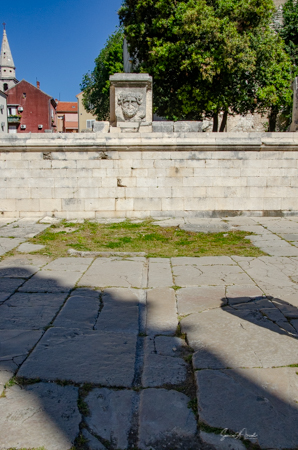 In front of the wall of faces, there are remains of an alter used for ritual sacrifices. One the pavement there are shallow, narrow gullies, or recesses, where the blood of the animal being sacrificed would flow to the ground, onto the main square where the locals would rejoice as they believed the sacrifices would appease the gods.
In front of the wall of faces, there are remains of an alter used for ritual sacrifices. One the pavement there are shallow, narrow gullies, or recesses, where the blood of the animal being sacrificed would flow to the ground, onto the main square where the locals would rejoice as they believed the sacrifices would appease the gods.
Church of St Donatus
The main structure in the Forum is the Church of St. Donatus, which is also the symbol of Zadar. It is affectionally called the donut, both as a play on the name and because of its unusual cylindrical shape with double interior space. [Philip – I think there was more to the story…???] It was originally dedicated to the Holy Trinity, but later was rededicated to Bishop Donatus from Zadar who had raised the money to build it. The church itself was built with remnants of the Roman forum. For example, in the base of the church, we could see pieces of Roman columns. Inside it is a small space with beautiful old columns in green marble. It is one of only a few buildings from the early Croatian kingdom to have survived the Mongol invasion of the 13th century. Although a church for 200 years, it is now only used for concerts.
St. Elias Church
While Catholicism is the most common religion in Zadar, there is one Greek Orthodox church, St. Elias, and this was our next stop. There was a tall bell tower with flowers growing out of it. And next to it was a baroque style church built in the late 18th century. What is most unusual is that this was a medieval Catholic church, but in 1548 the duke of Zadar gave it to the Orthodox Greeks, made up mainly of mercenaries (Stratioti) who had been merchants, soldiers and sailors and who, as defectors, made up the military protecting the borders. The duke allowed the Orthodox Greeks to adapt the church for their religious ceremonies. In 1773 the old church was finally torn down and a new baroque one was built in its place. This was a true example of the coexistence of different cultures, showing us that it was possible back then, and can still be possible today.
The church is not always open, but today the door was open and we went in. The priest was sitting there chatting with an old woman. The church was one small room fully decorated with a huge collection of icons dating from the 16th-18th centuries. There was a section for the women and a large painted screen to separate the priest from the people.
Just outside the church was an older man selling lace earrings. His wife, who was  an invalid and could not leave the house, made the earrings and he would sell them, every single day standing in that same spot. I bought three pair from him and when I asked if I could have a picture with him, he seemed surprised, but gave me a big smile.
an invalid and could not leave the house, made the earrings and he would sell them, every single day standing in that same spot. I bought three pair from him and when I asked if I could have a picture with him, he seemed surprised, but gave me a big smile.
St Anastasia’s Cathedral
Tamara took us into the cathedral which was built in the 12th and 13th centuries. The façade was richly decorated, and the inside was painted with frescoes. Like the rest of Zadar, the cathedral was mostly destroyed when the Allies bombed the city and so much of it has been reconstructed. But what Tamara really wanted to show us was the white marble sarcophagus with the relics of St. Anastasia.
The Legend of St. Anastasia
There was a young Roman girl who did not want to get married but rather wanted to dedicate herself to the church. Her family forced her to marry a patrician, but she refused to sleep with him. Her wish was to remain a virgin, so he locked her in her room. After his death, she moved to Aquila in the company of St. Grisogno where she witnessed his martyrdom. Because of her association with him, she was also burnt as the stake. Her relics (remains) were sent to Constantinople in the 5th century and were then given to Bishop Donatus as a token of reconciliation between Byzantine and Zadar. Bishop Donatus had them white stone sarcophagus with her remains placed in St. Peter’s Church which was then renamed St Anastasia Cathedral.
Bell Tower
Right next to the cathedral is a large bell tower. You can tell by looking at it that it was built in two parts. The first two floors were built in 1452 while the upper two levels were built in the 1890s. They look different. We opted not to climb the 180 steps to reach the top, although the view would have been incredible. Instead, we sat at the café at the foot of the tower.
Time for coffee
After walking around for a bit, Tamara decided we had earned a coffee. We sat in the square next to the cathedral, the Roman Forum behind us and of course, had a coffee macchiato, the favorite drink of the locals. We watched the people milling about, drinking their own coffee and smoking. It seems everyone here still smokes.
Gold and silver and more gold
Once we were done with our coffee, Tamara next took us to see the Silver and Gold of Zadar. The nuns of the Benedictine convent of St. Mary have been the guardians of the silver and gold of Zadar since the 7th century, since the Byzantine period. When the Allies began bombing Zadar in 1943, the nuns secretly hid the treasures in a deep hole under the church bell tower, saying that they “deposited it in the earth to which it belongs.”
We walked up a flight of stairs into a dark room with spotlights on the gold relics. Inside the gold was a relic, a bone of a martyr or saint or a priest or other important person. The shape of the gold was the giveaway of what was inside. An arm, a hand, a skull, a leg. Each piece of gold was carved and each was more beautiful than the previous one. There were also crucifixes, paintings, and vestements interwoven with gold and silver thread. We walked up another flight of stairs to the third level and the first thing we saw were some life size wooden statues of men. I figured they were the 12 apostles but I only counted 10 of them. Tamara explained that indeed they were the apostles, but two had been destroyed, so now they are displayed here in the museum instead of in the church.
Be like a local and relax
We took our leave of Tamara soon after and since we had some time before we were set to leave, we sat back in the main square, Narodni trg, and had some cold drinks. The square was full of people and buskers playing music. The old guard house stood on one side. City Hall was behind us with reliefs on the sides of the building. The court house was on the other side. We sat there for a while watching the people, listening to the buskers play their music, and killing time. Actually doing the Zadar thing and relaxing. After a while, we walked down to the Bridge Gate.
At one time, Zadar was the largest fortified city in Venice’s portfolio. Today the walls and military facilities once devoted to defense are used as parks and backdrops for walking paths. Some sections of the walls were built by the Romans, and some were built by the Venetians much later as fortification against the Turks, who mounted relentless attacks on the city during the Middle Ages. Today only portions of the walls and four gates remain. We already had seen the famous Land Gate. Now we were going to walk through the Bridge Gate.
The name is fitting as this gate, on the north side of Zadar, is right at the bridge leading to the other side, the more residential area of Zadar. We walked out of the Old City walls and crossed the bridge. The water was a deep blue and was full of boats, both little ones and large yachts.
Nostalgie Restaurant
We watched them for a while and then made our way down Ul. Elizabete Kotromanić to the Nostalgie Restaurant for a lunch of “traditional Neapolitan pizza.”
We were there a bit early as it was about 1130, early for a Croatian lunch. The server told us that we could order whatever we saw on the menu except pizza, as the pizza oven was not yet hot. We mentioned that we had come for pizza, so she brought drinks.
Church of Saint Simeon
We realized we were sitting right at the Church of Saint Simeon which was for just 30 minutes each day from 1130-1200. It is famous for the cedarwood sarcophagus overlaid with silver said to hold the relics of St. Simon. This chest is considered a masterpiece of medieval art and is a unique monument of the goldsmith’s craft of the age. It is one of the most interesting works in gold in Europe now under the protection of UNESCO. But by the time we realized it, it was 12:01 and the church was closed.
So we went back to our table, and we once again relaxed and watched the people until our pizza could be baked. When it finally arrived, it was indeed a true Neapolitan pizza.
And then, it was time to leave. But not before an ice cream.

Final thoughts on Zadar
Zadar is a charming town, a combination of old and new. It is easy to maneuver, easy to get around and safe. We were only here for one night, and that was really enough, unless you want to just relax and swim and drink coffee. But be sure, unlike us, to watch the sunset at the Greetings to the Sun. And then send me pictures.
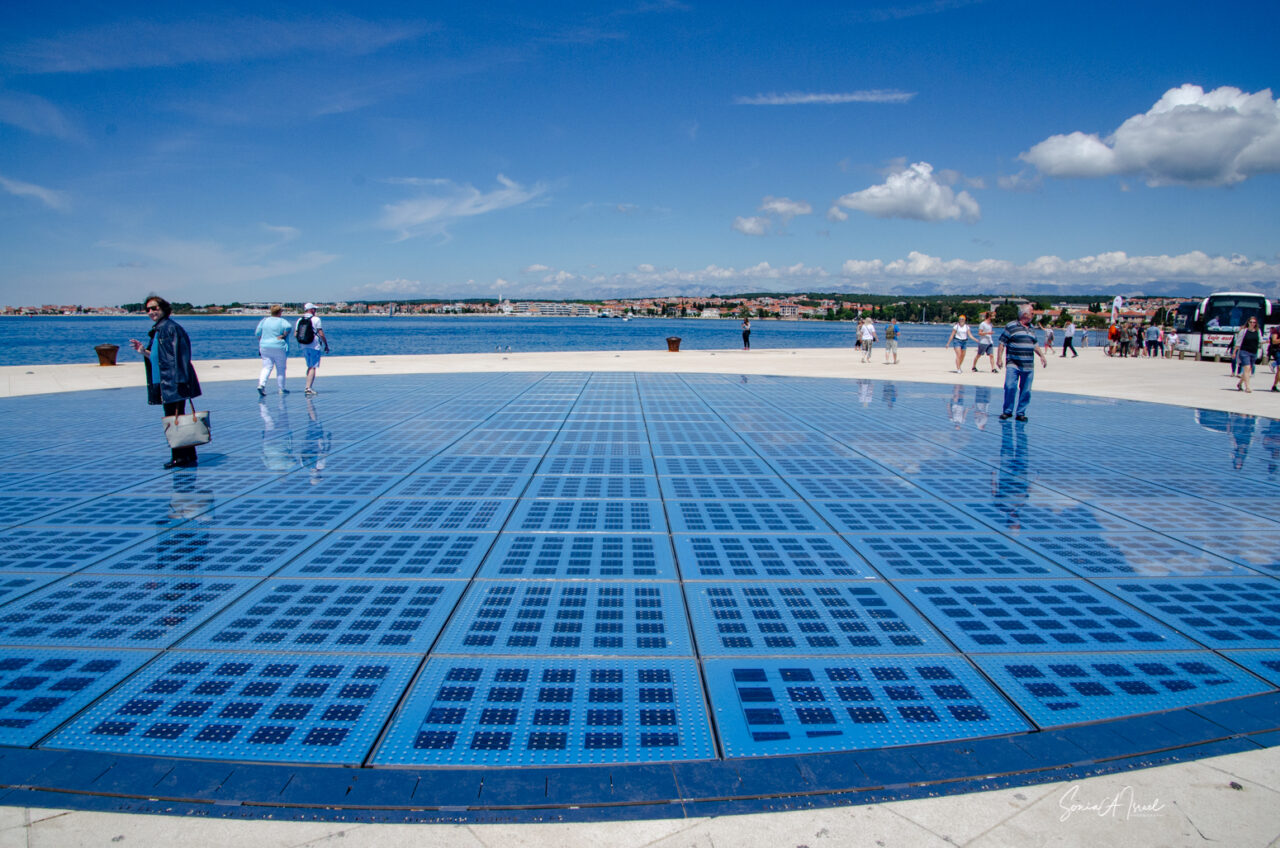
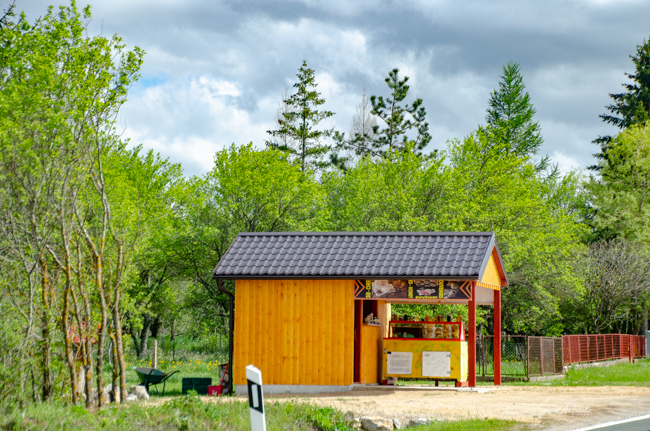
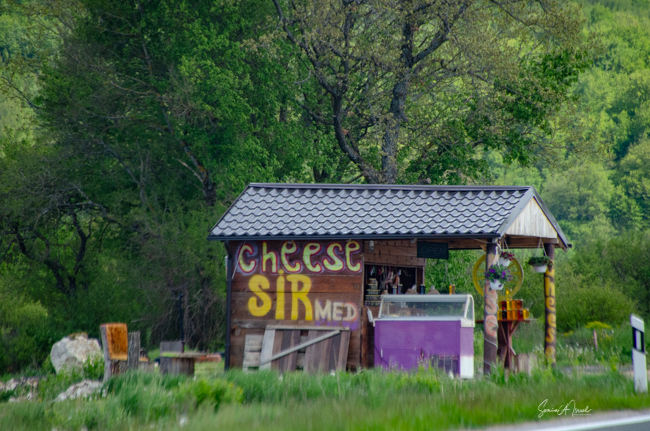

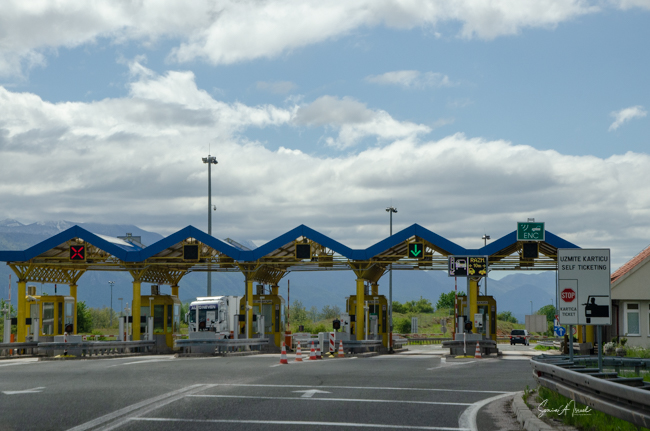
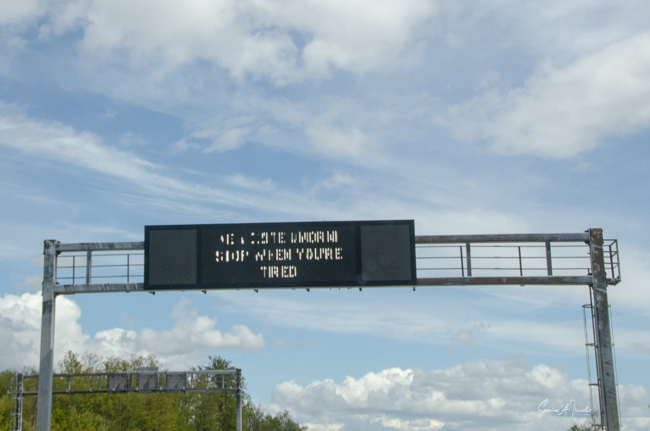
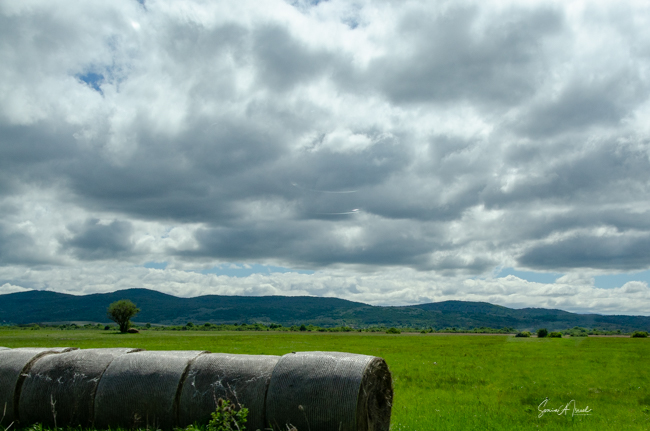
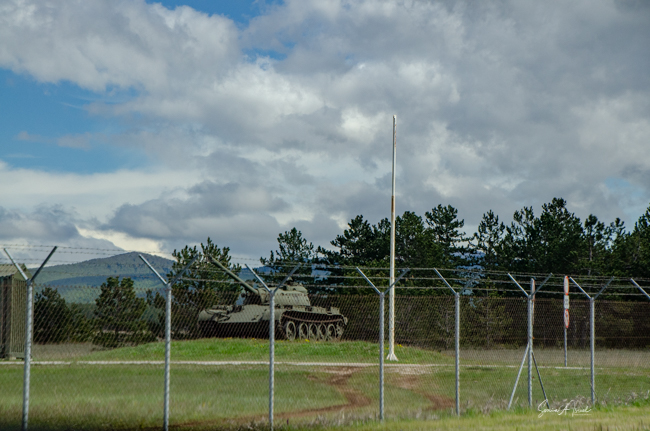
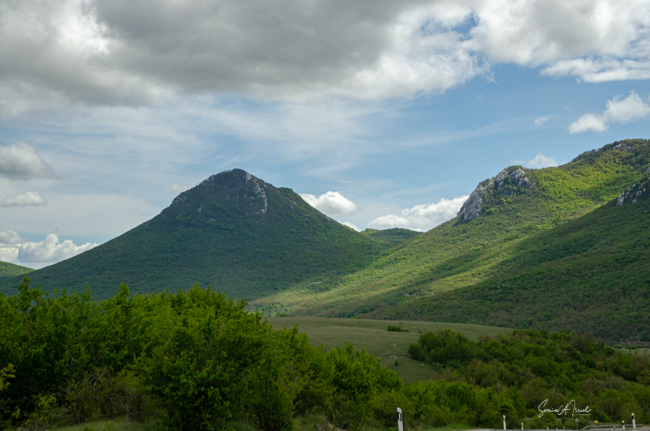
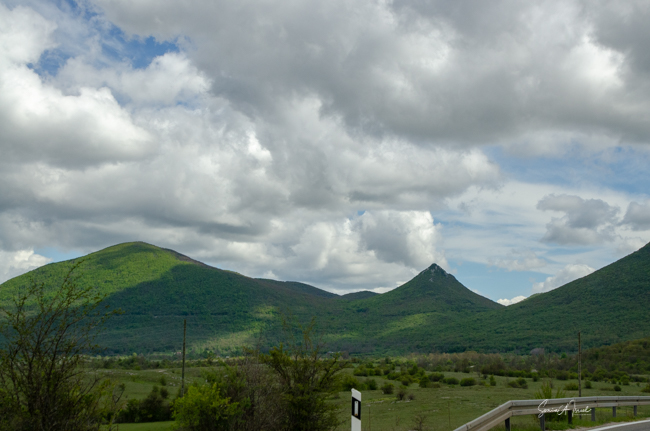
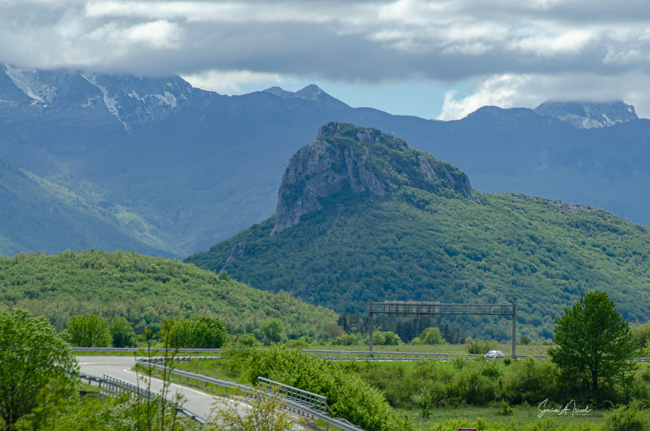
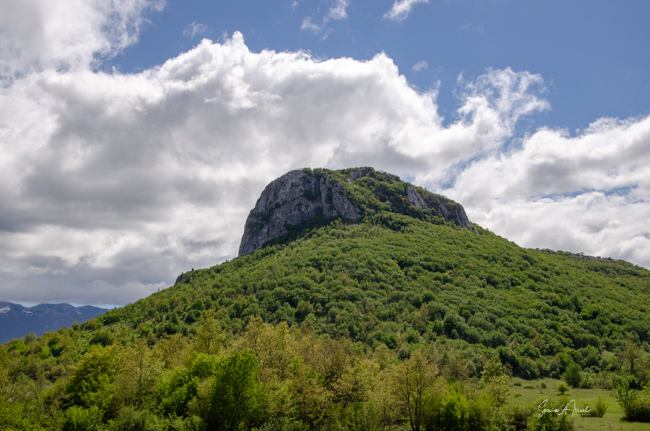
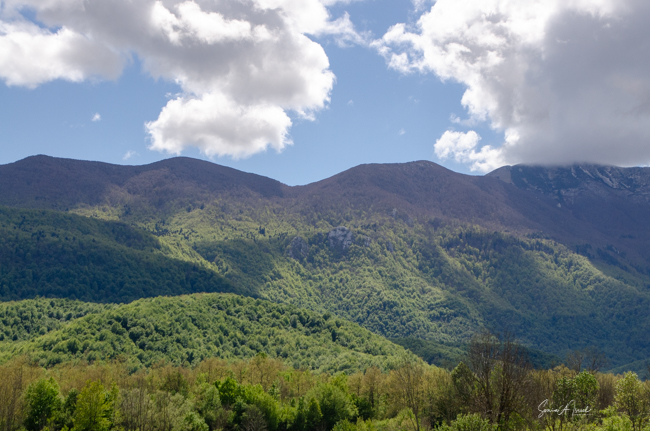
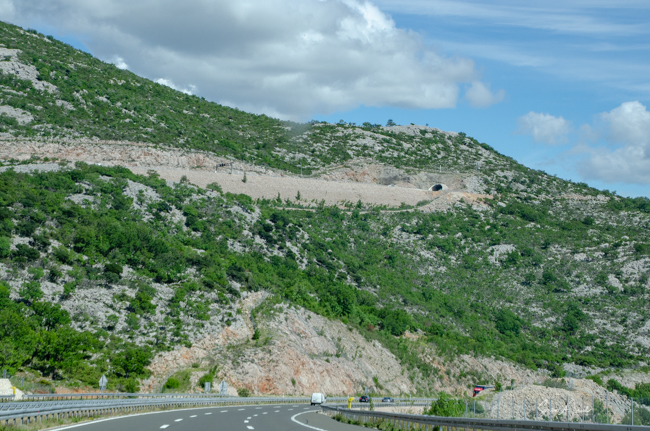
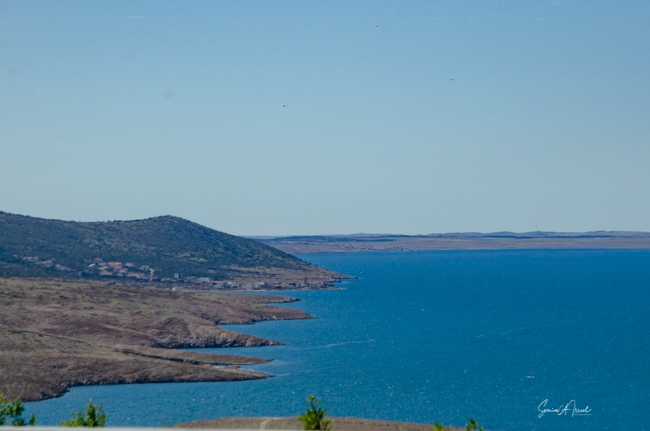
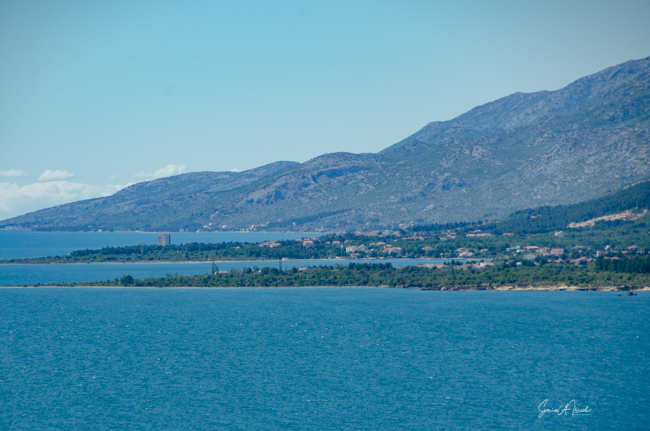

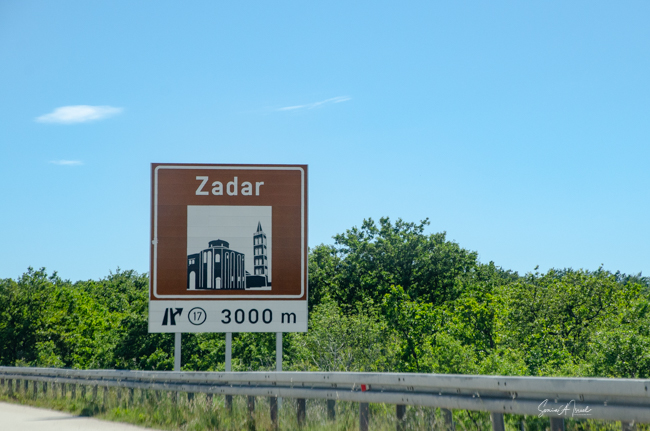
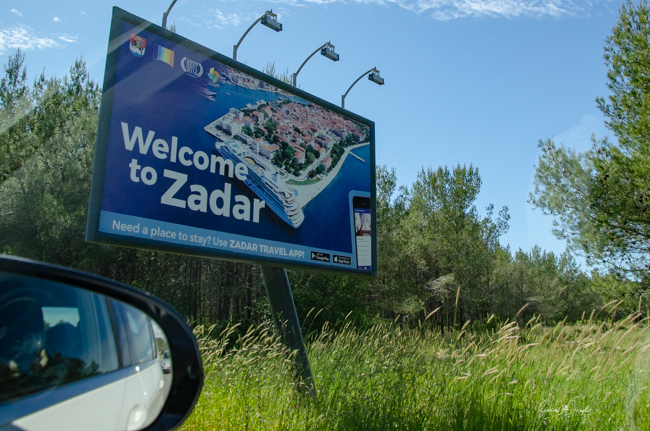
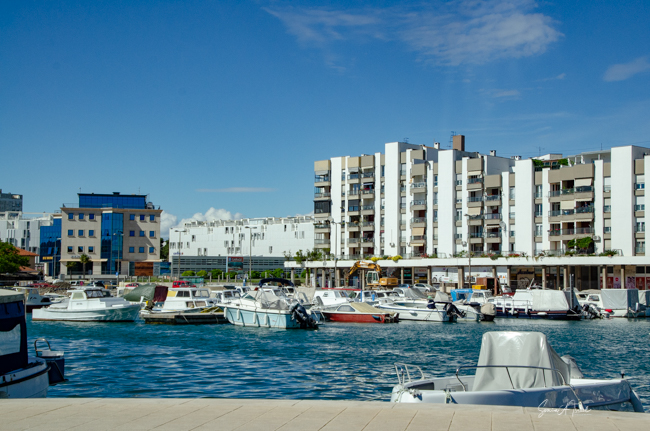
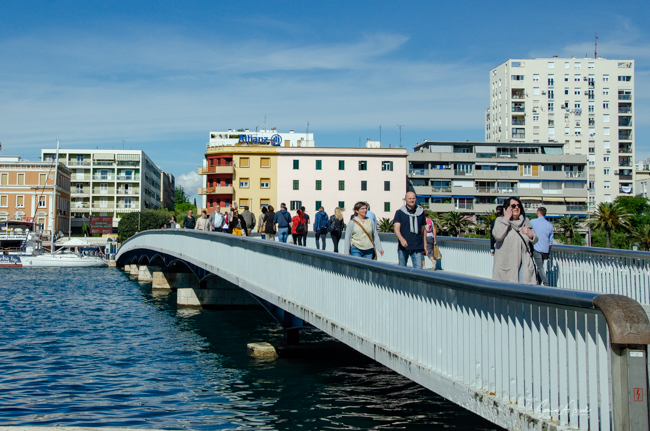
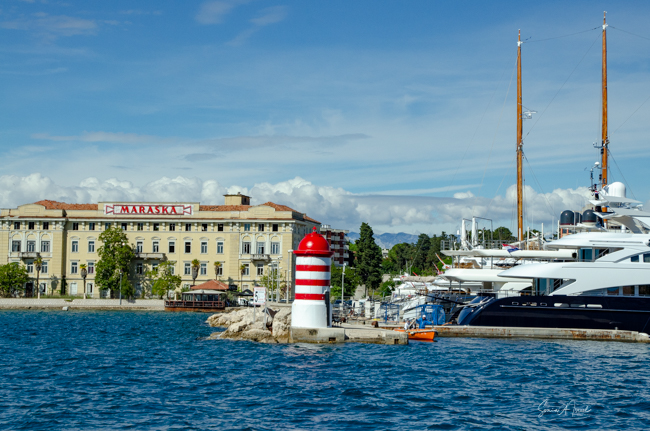
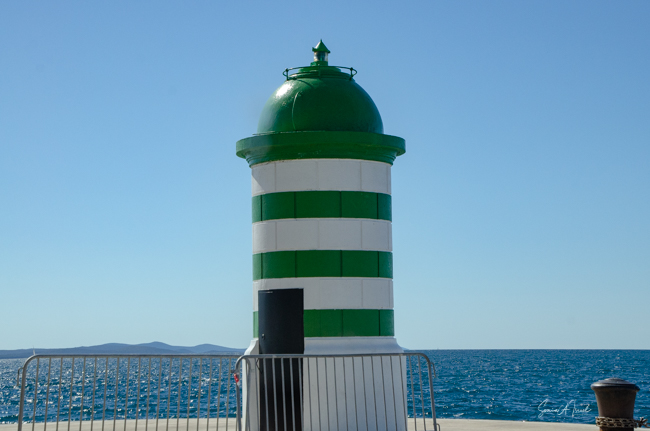
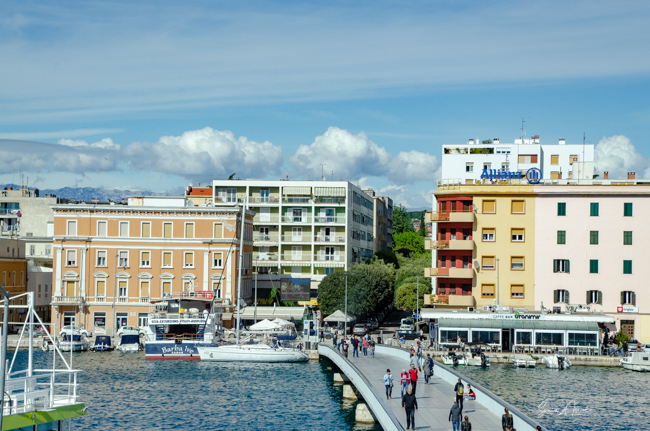
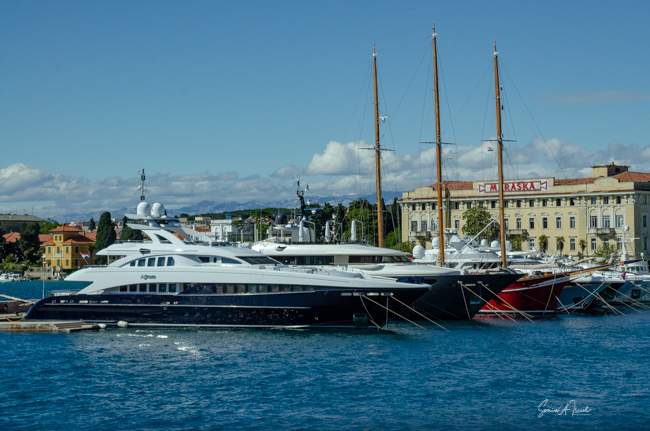

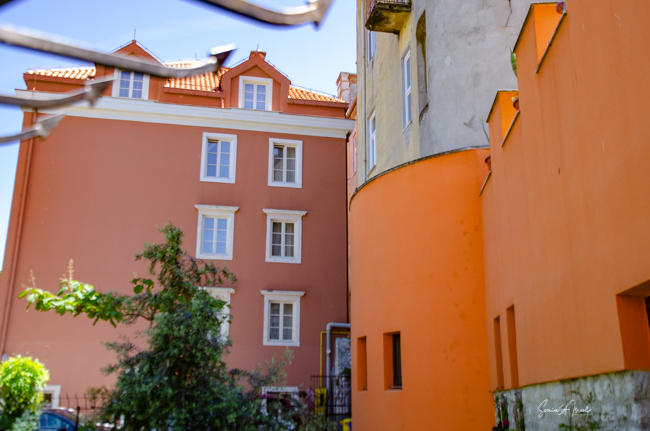


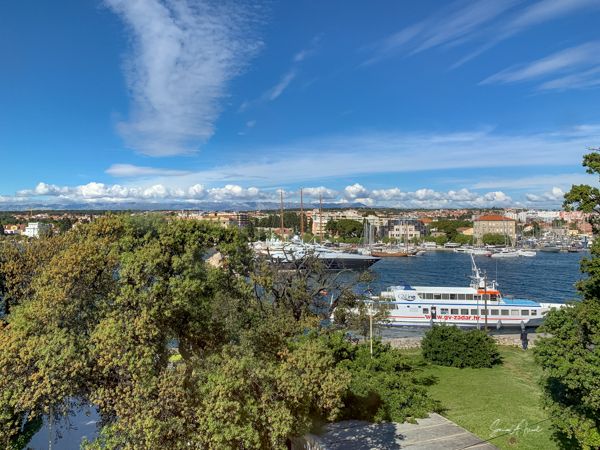















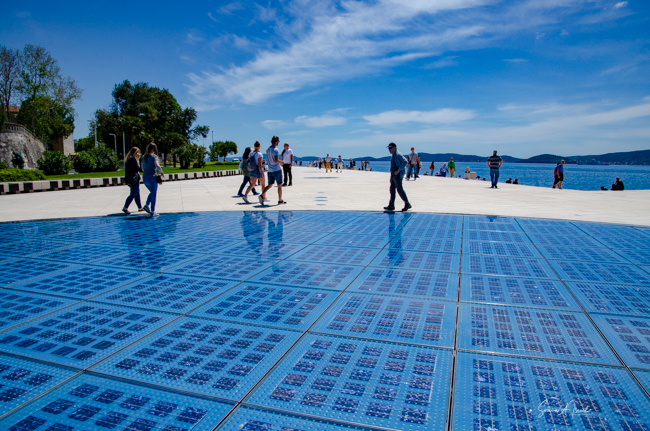
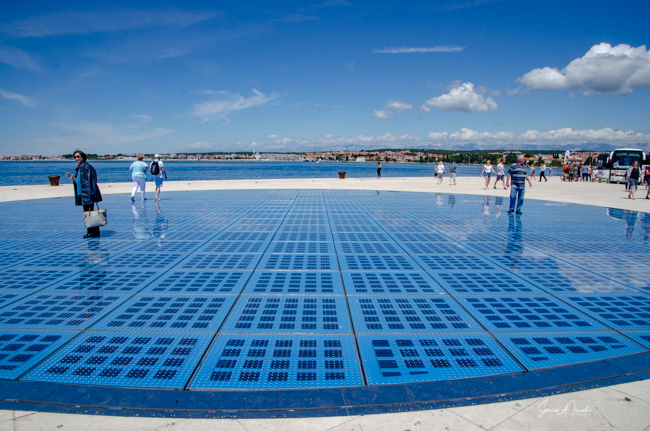


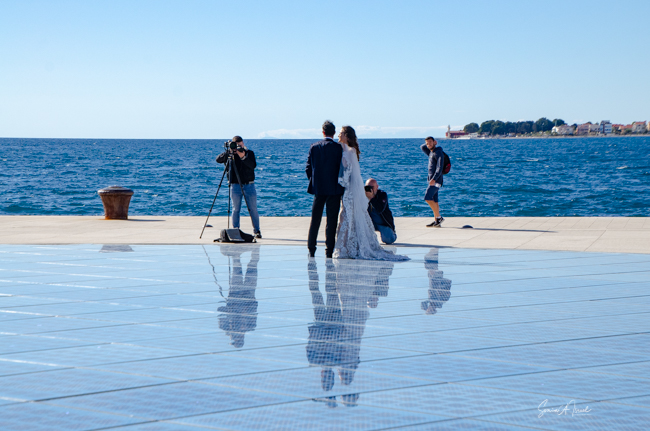
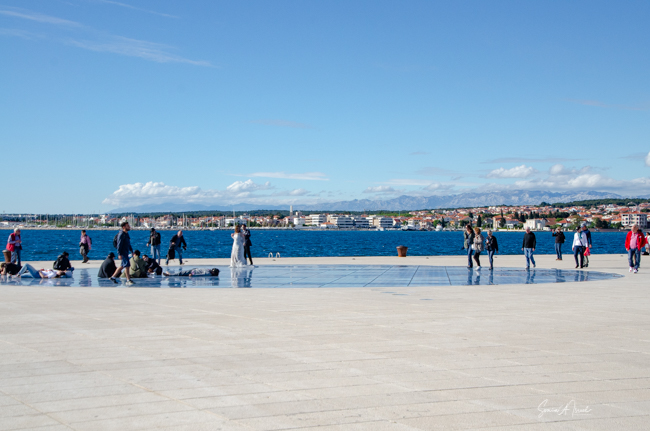

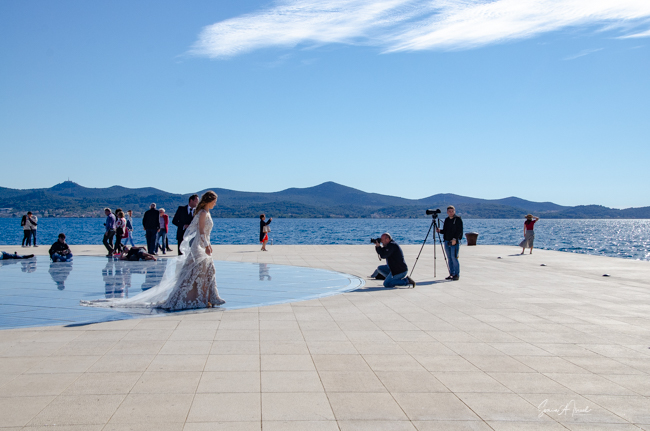


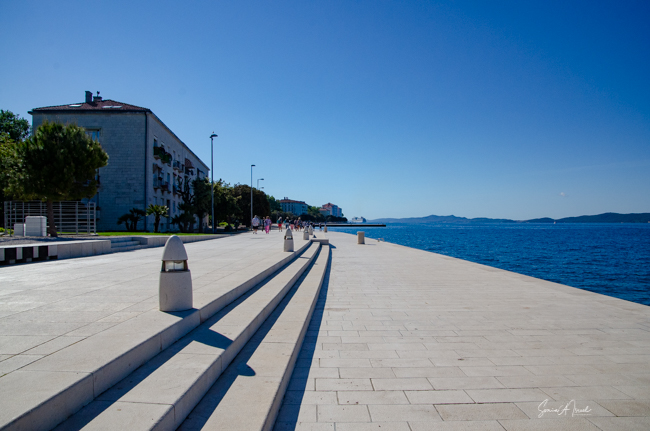
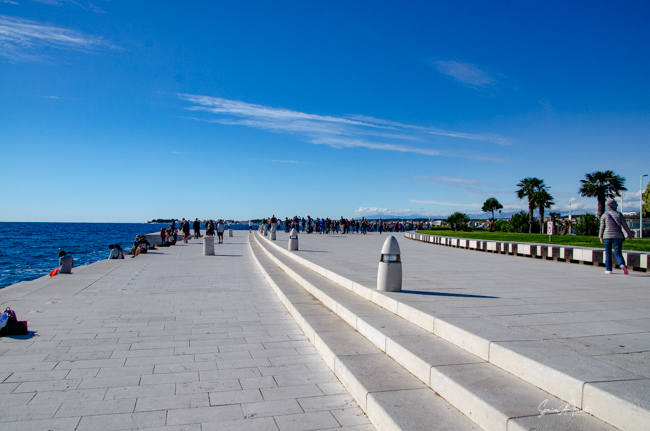
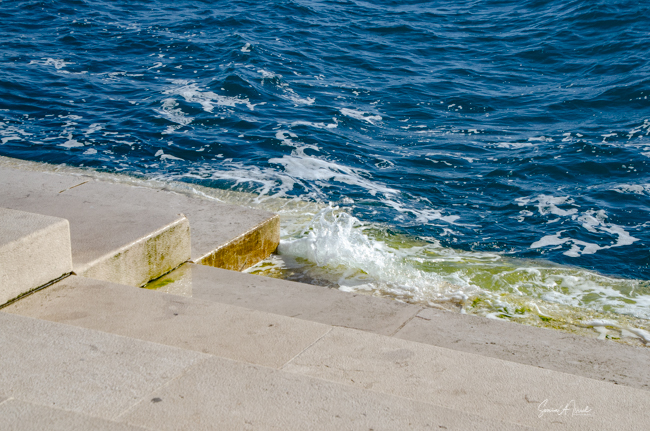
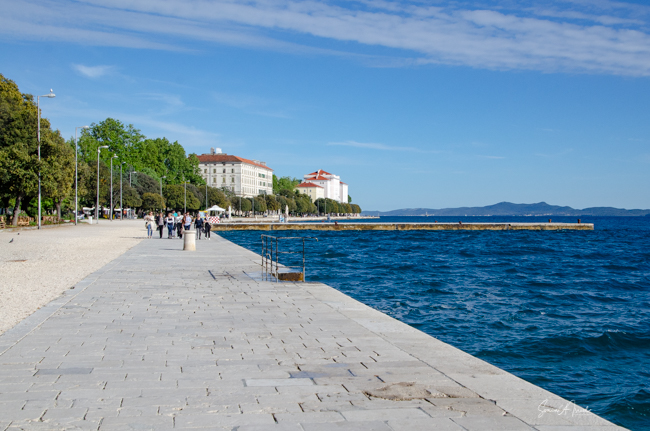
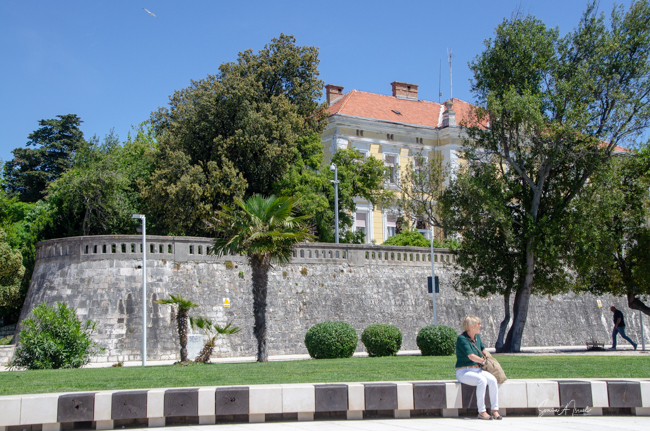
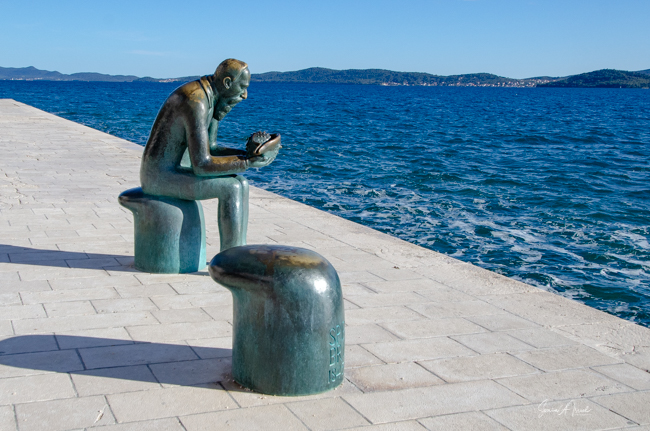
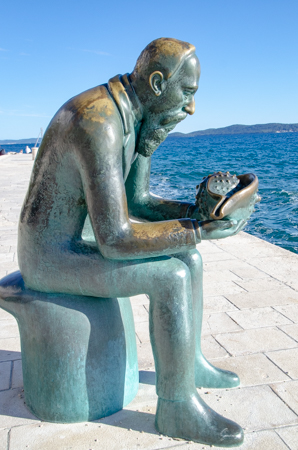
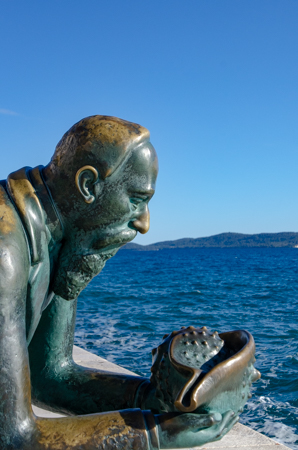
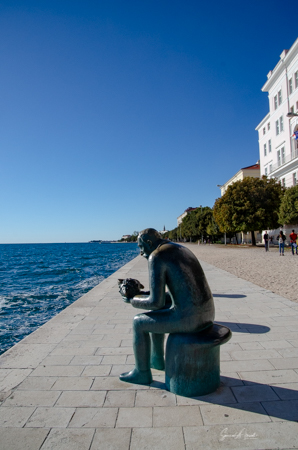
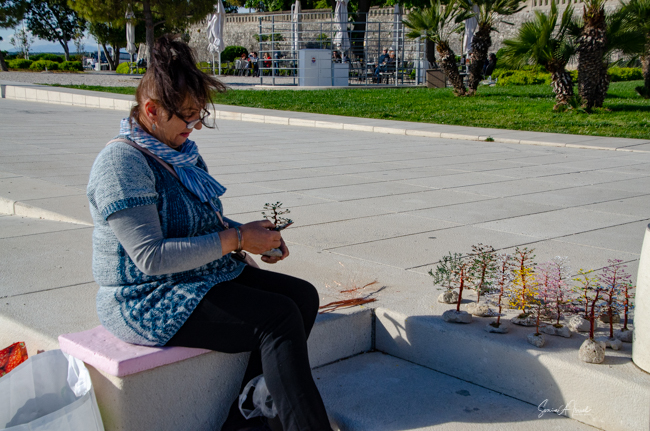
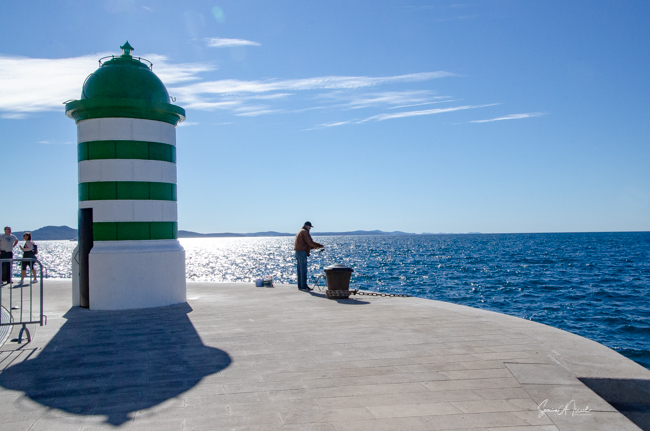
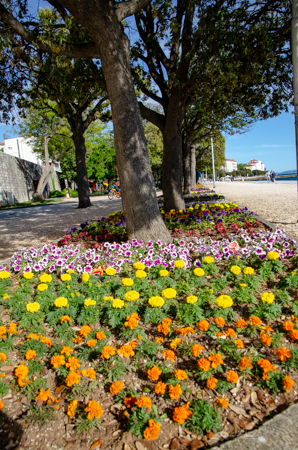

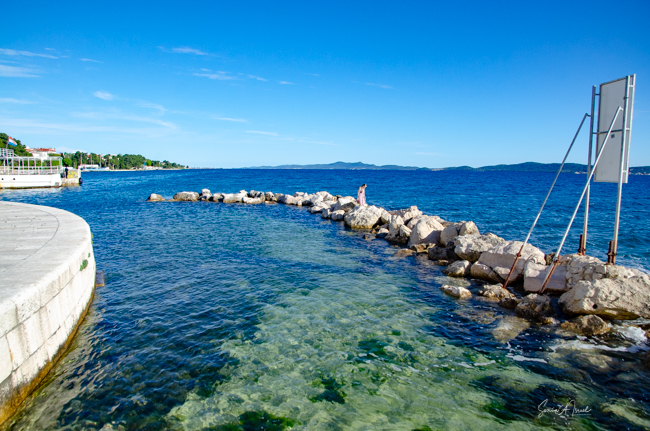
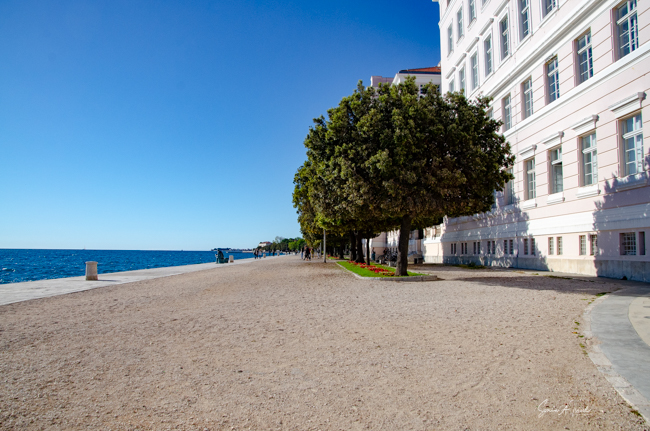
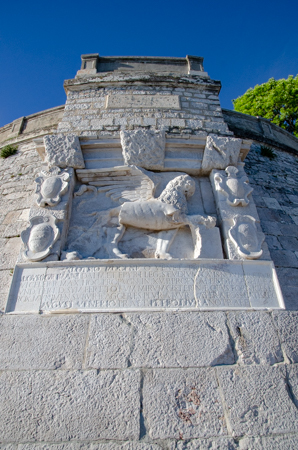

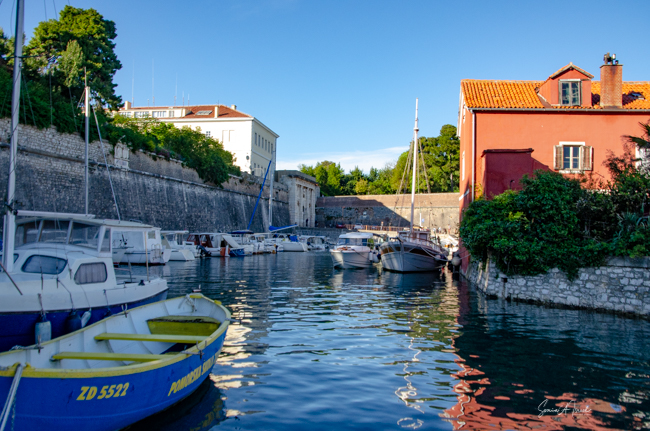
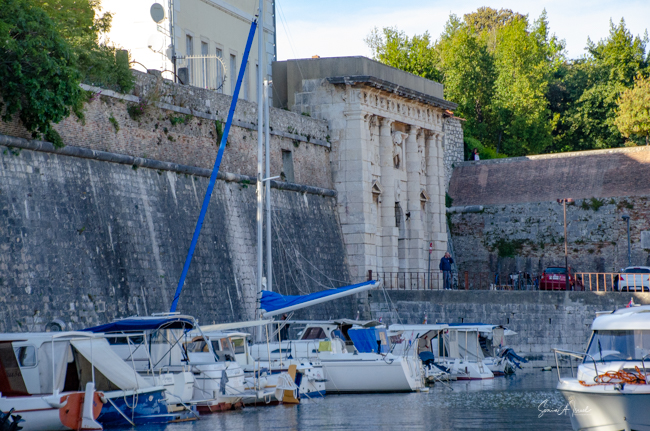
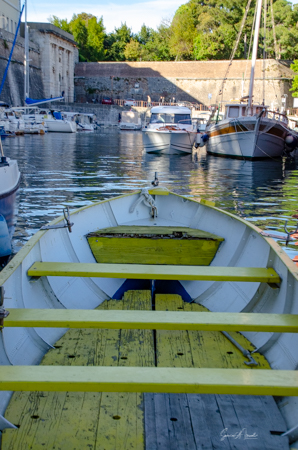
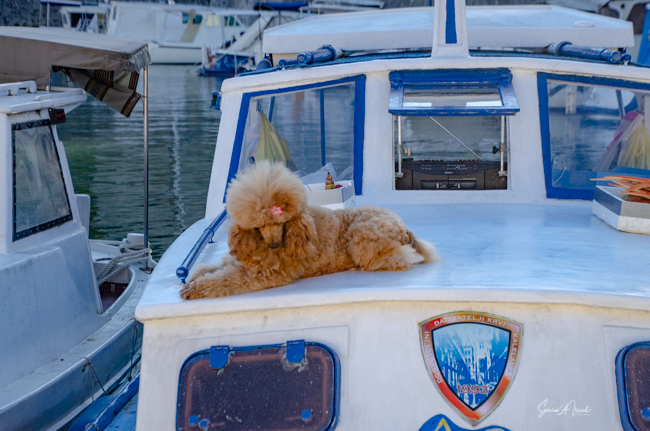

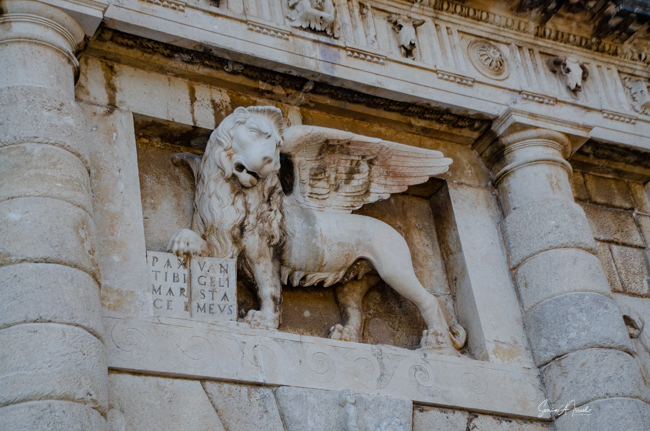
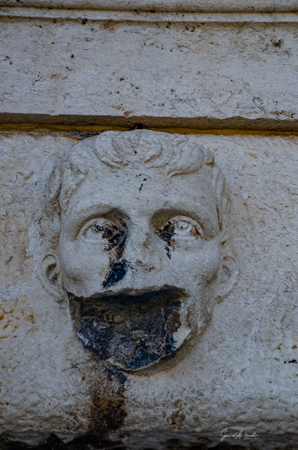
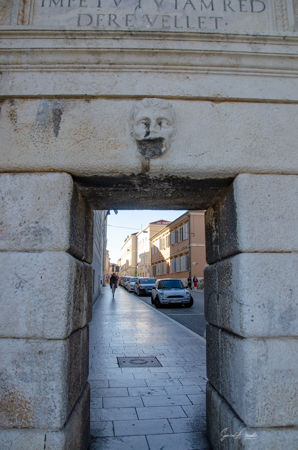
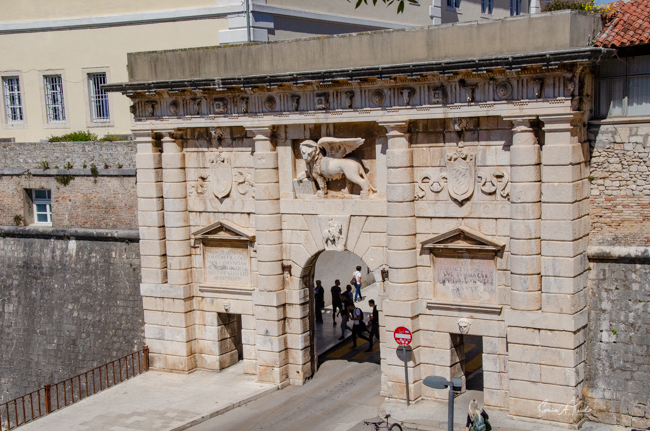

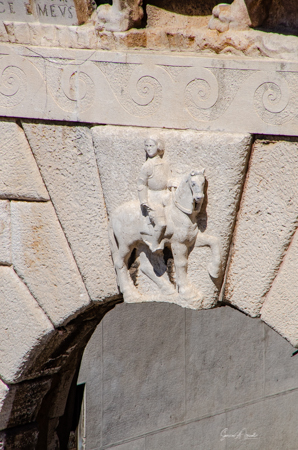
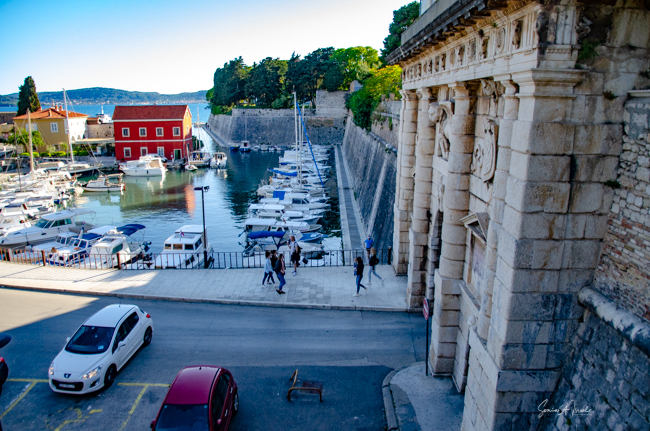
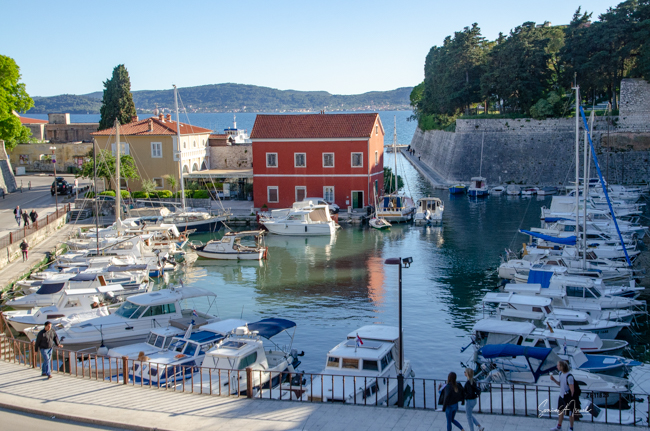
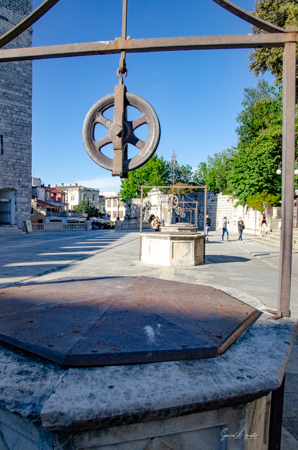
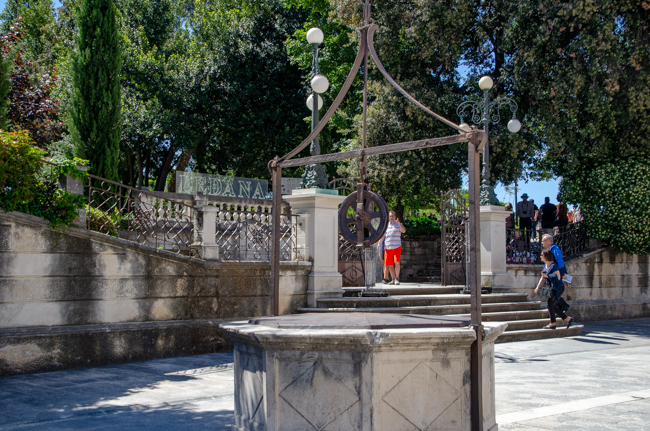

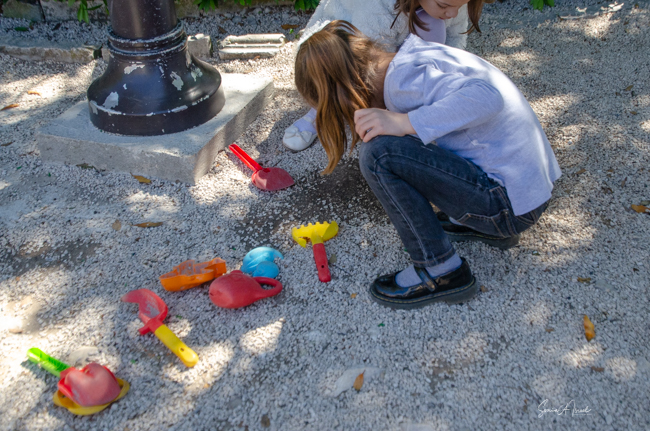

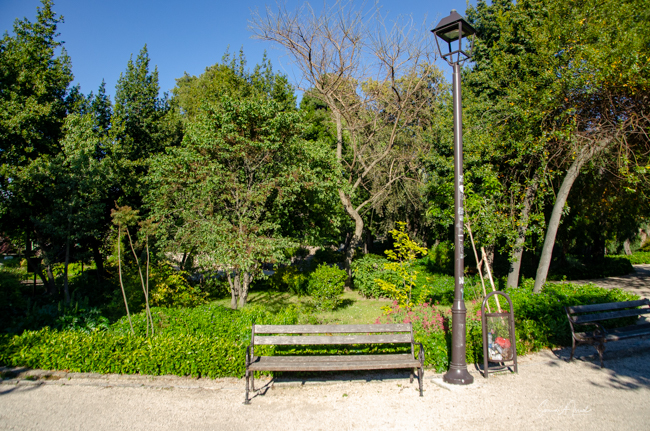
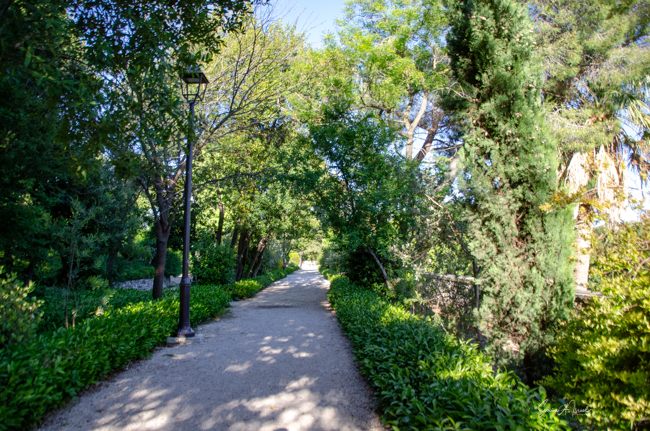
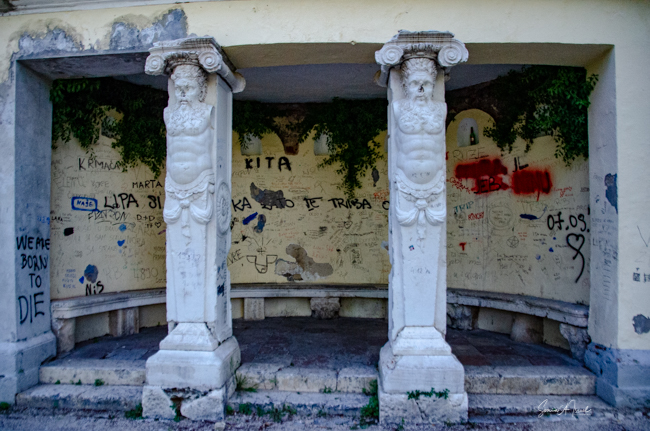
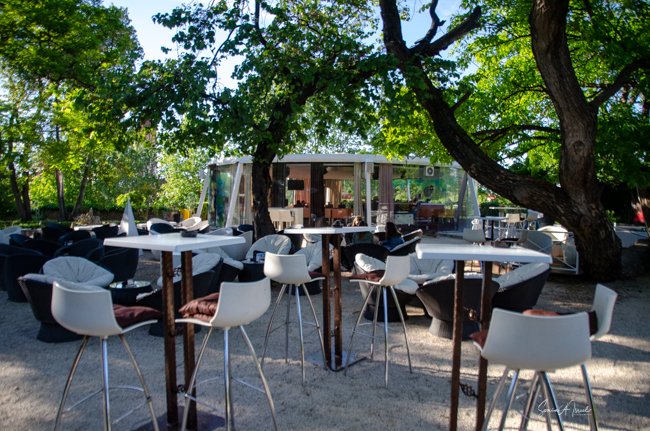
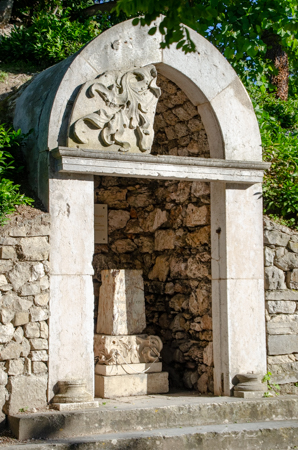
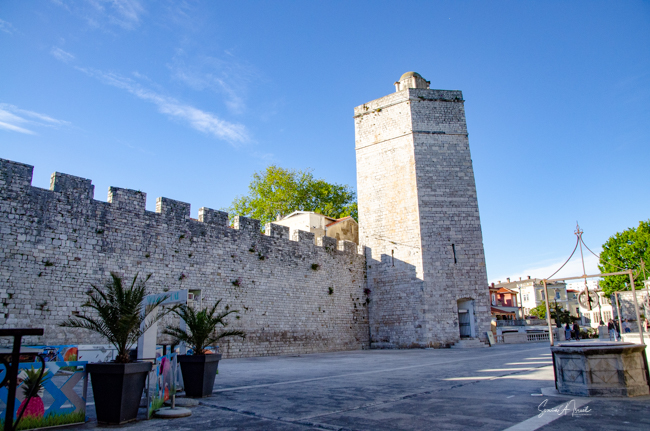


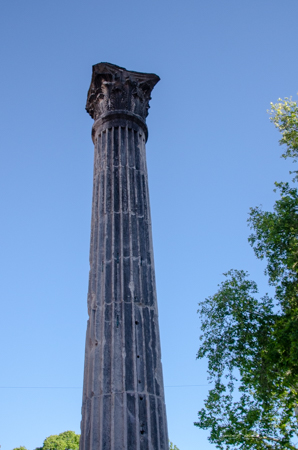
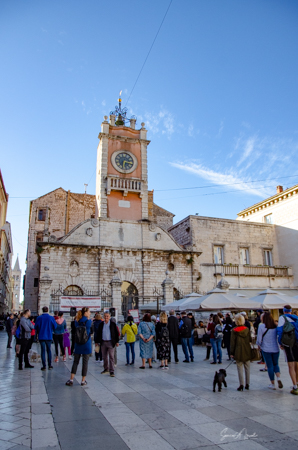
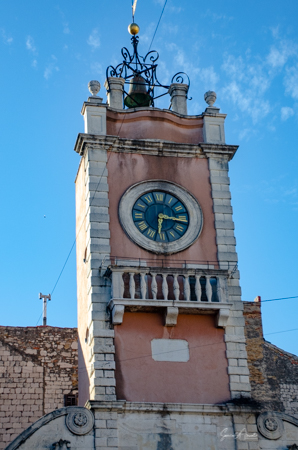
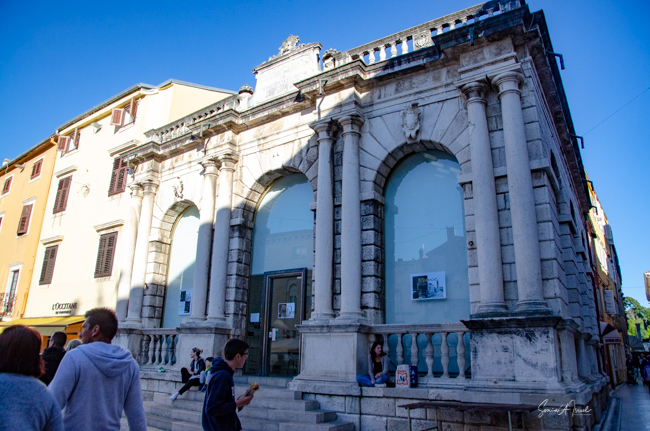
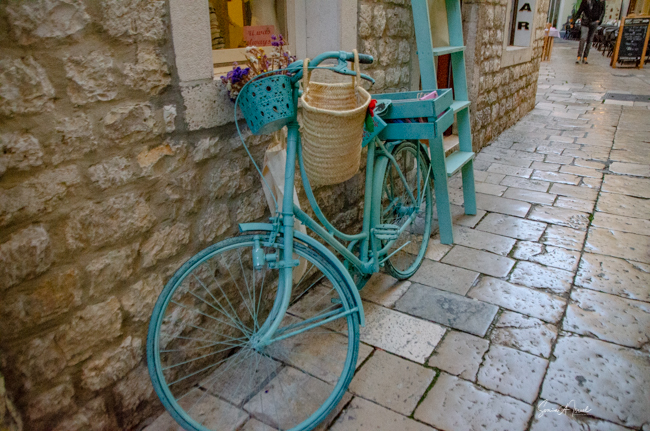
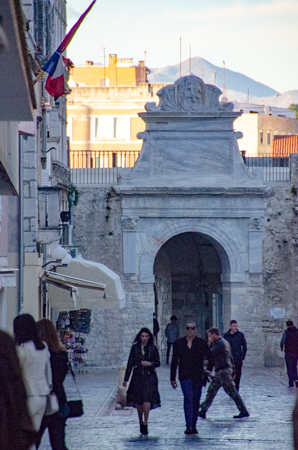
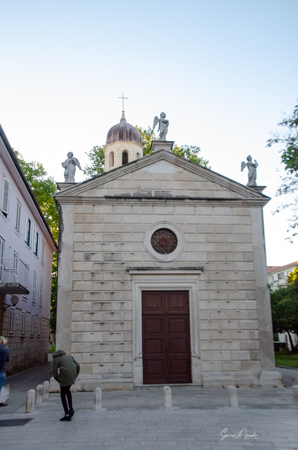
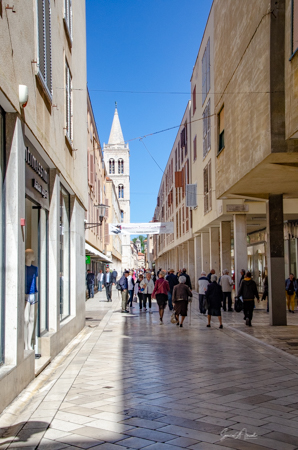
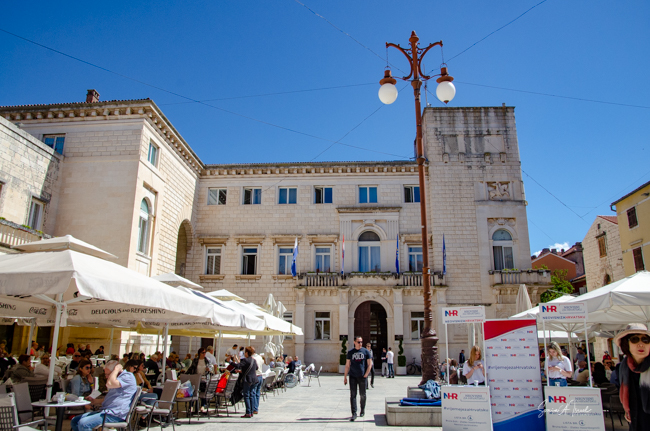
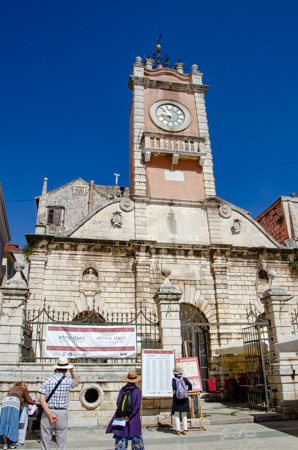
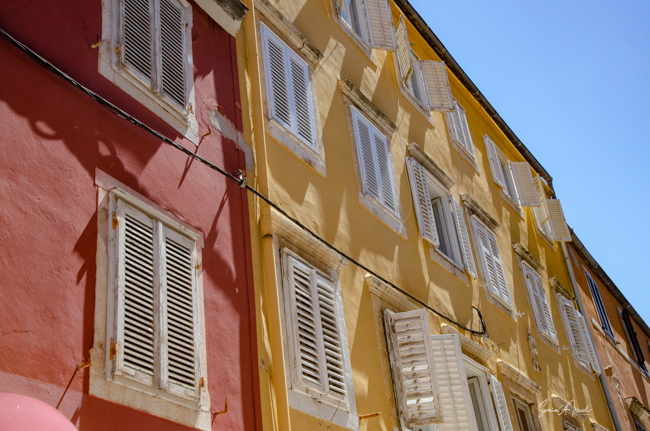
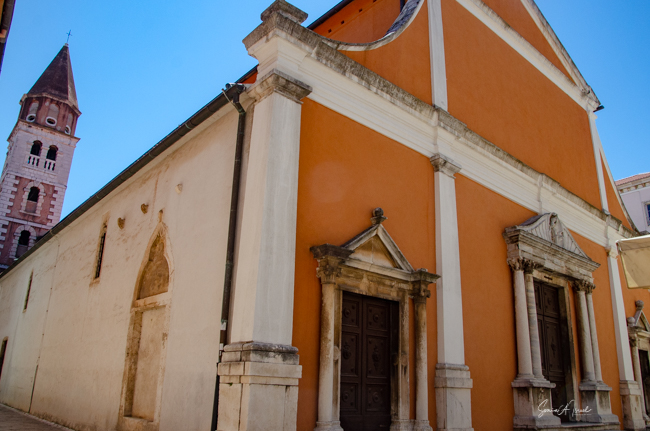
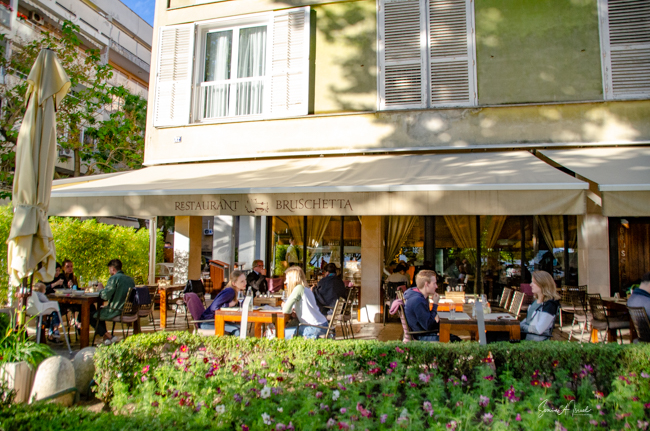







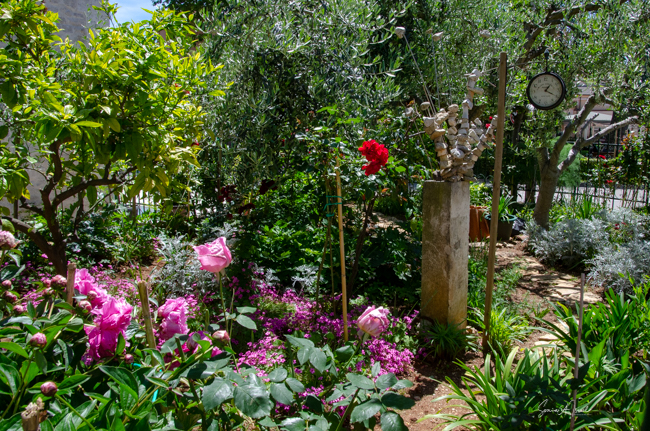
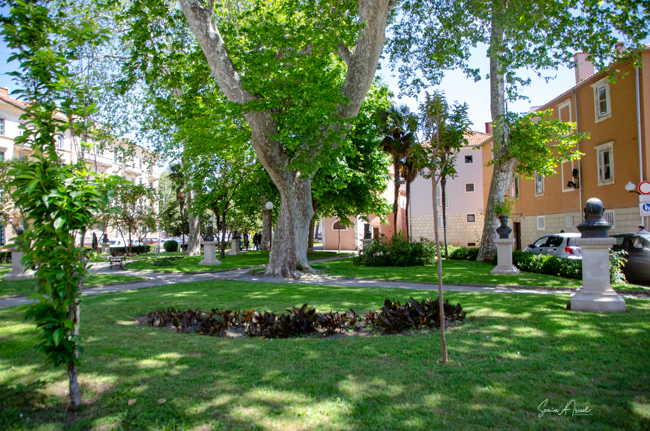
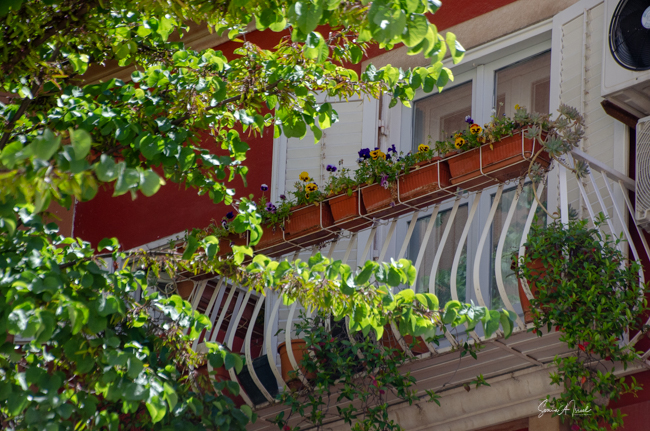
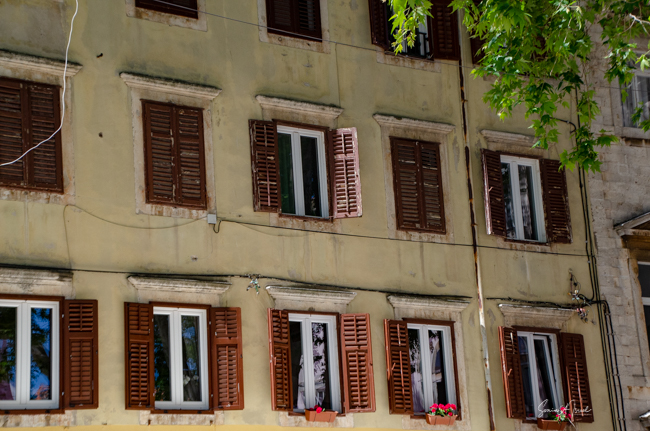
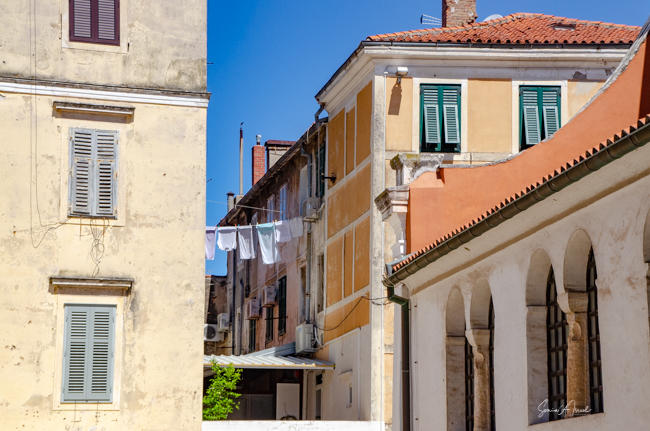
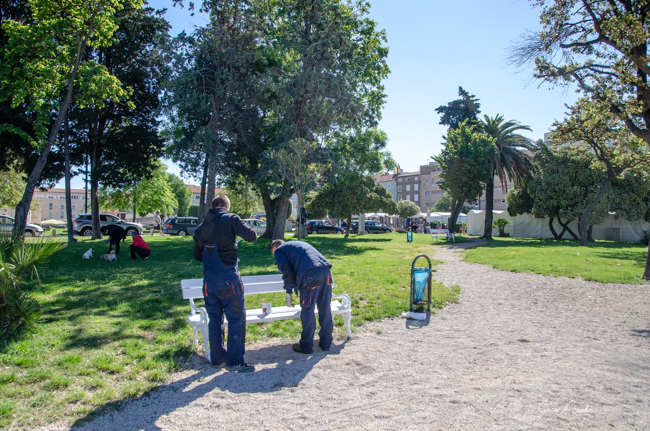

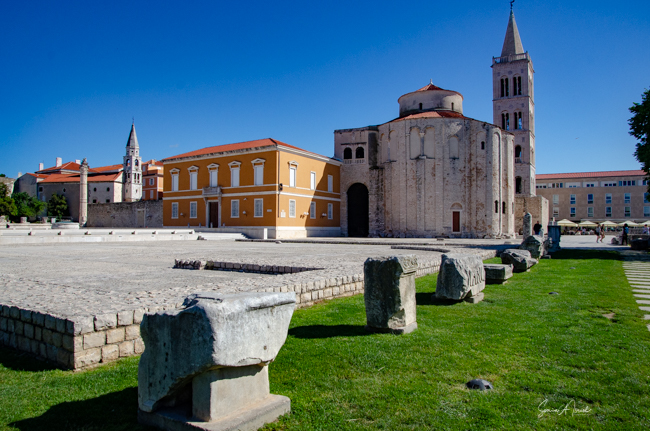
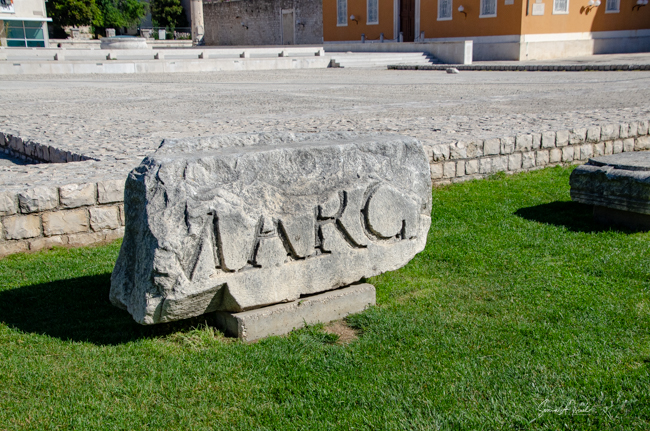
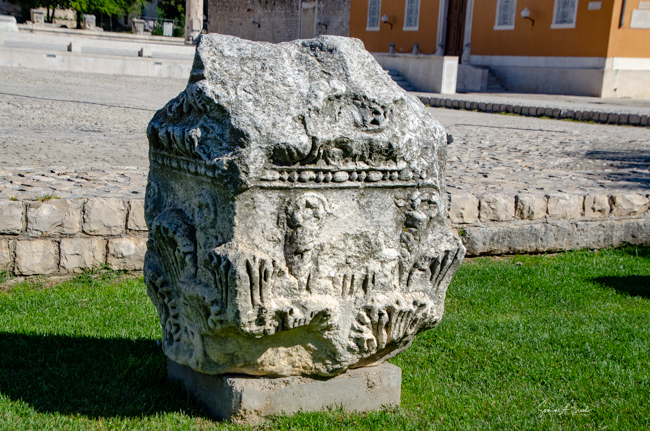
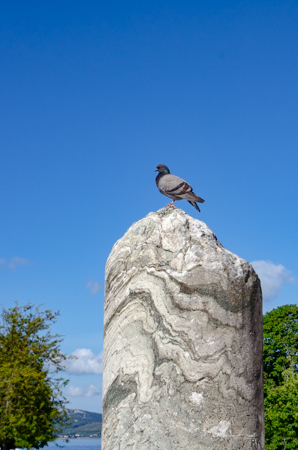
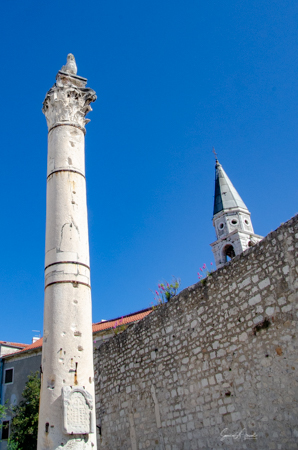
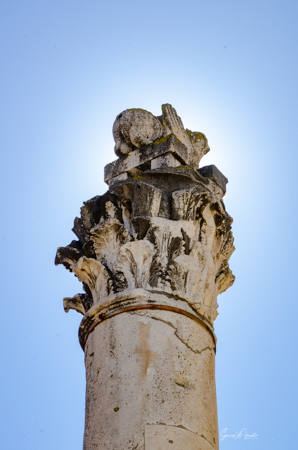
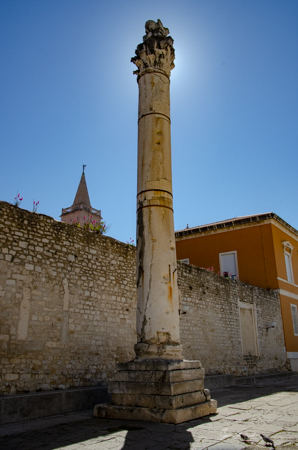
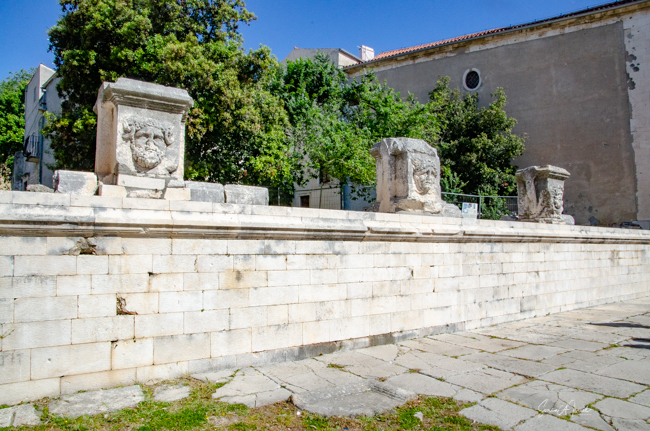
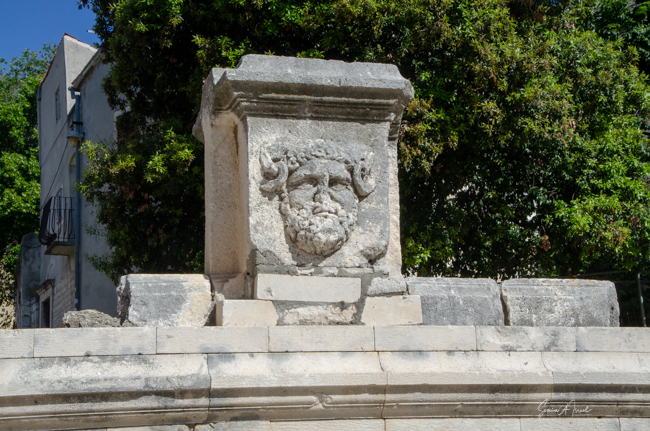
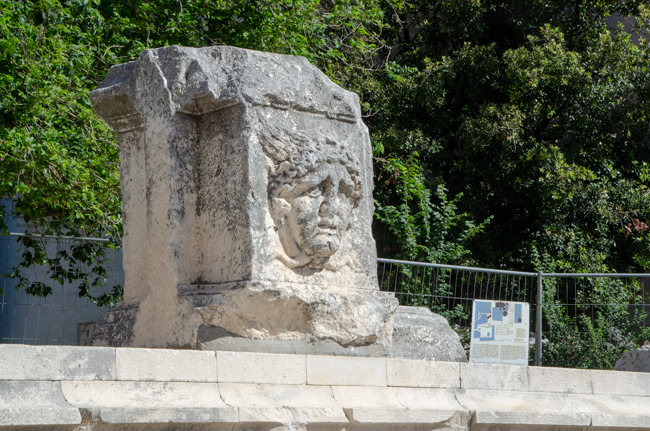
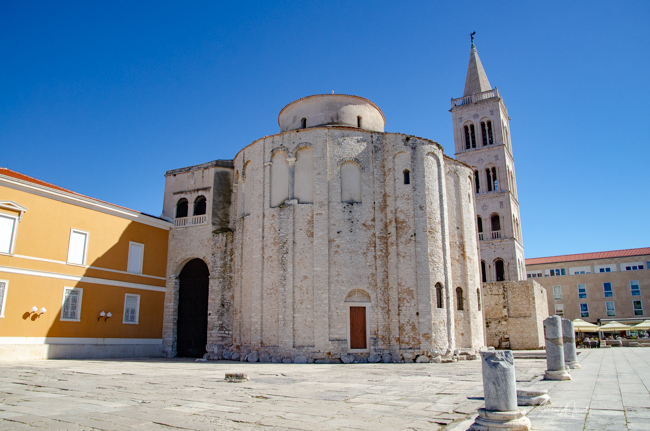
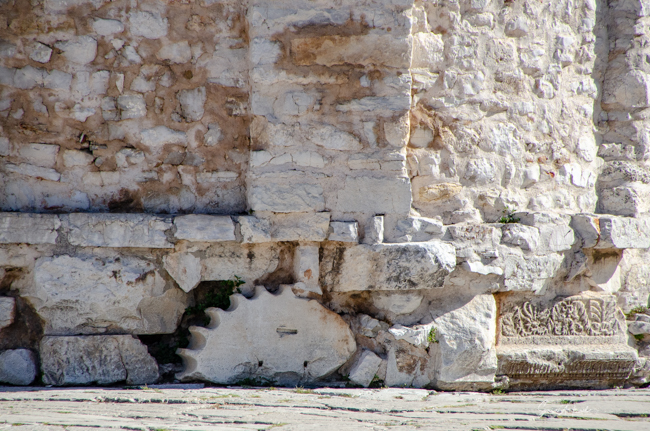
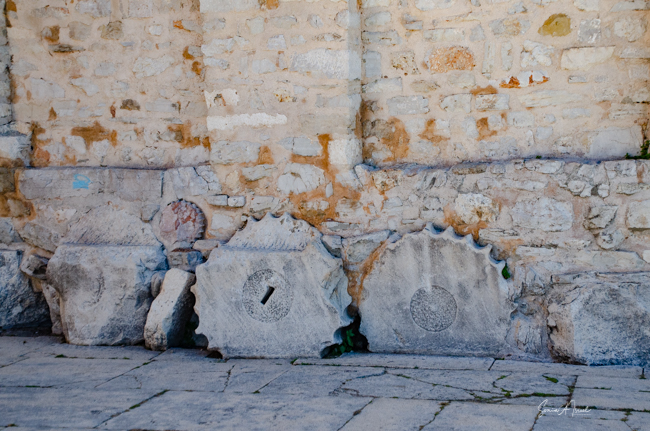
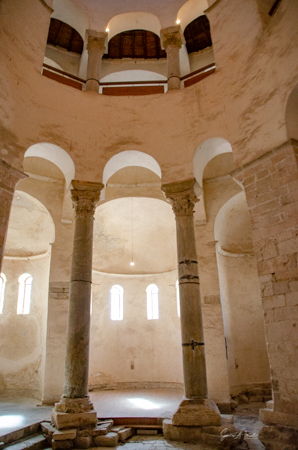
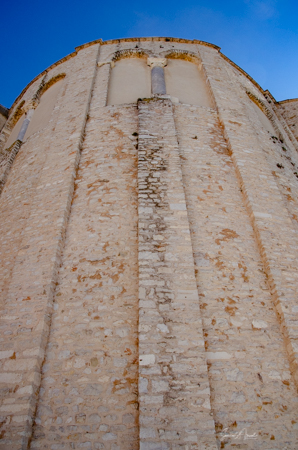
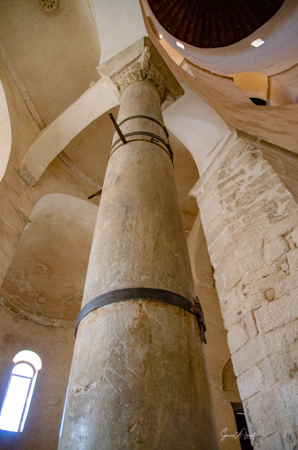


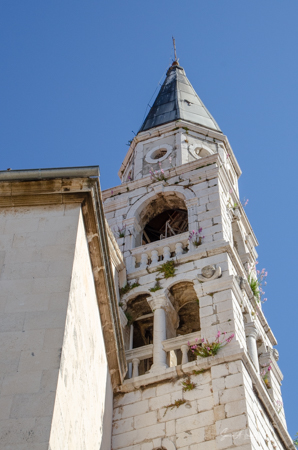
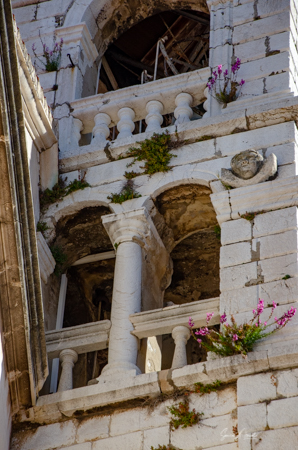







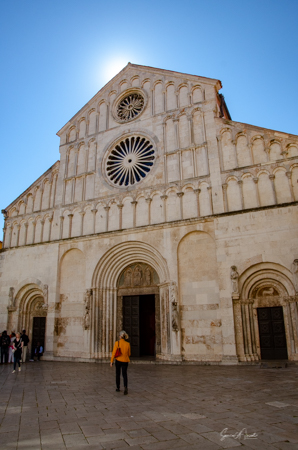
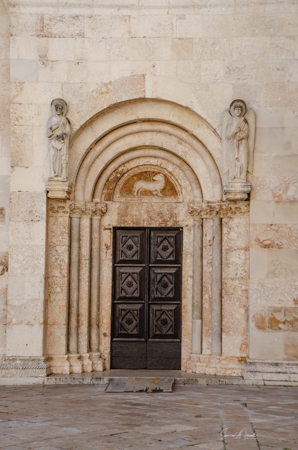
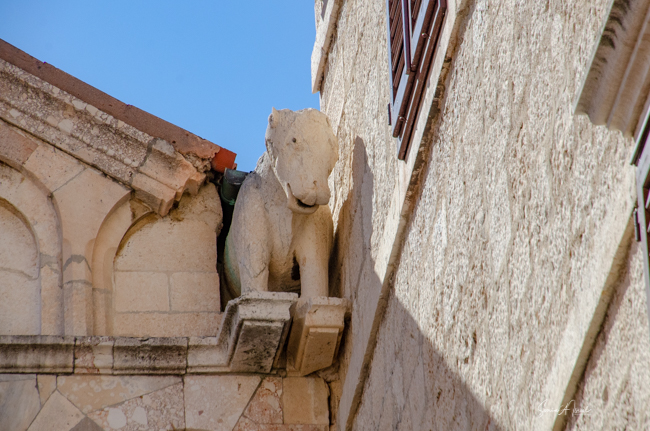


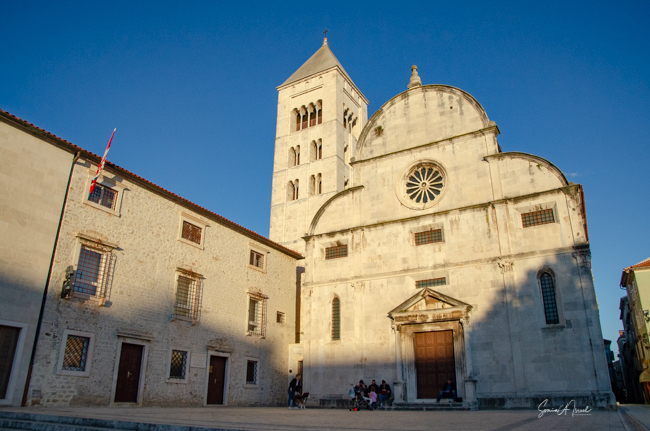
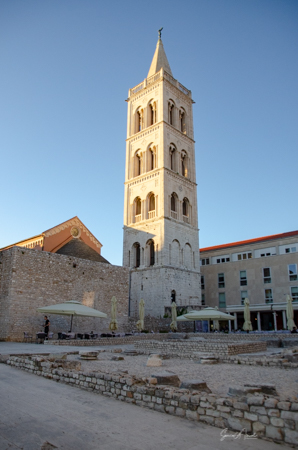
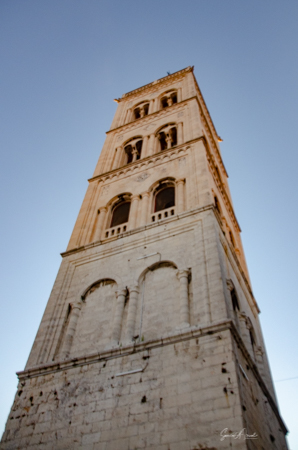
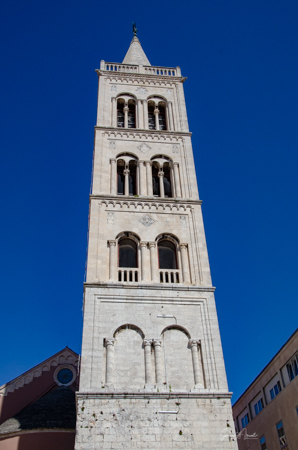
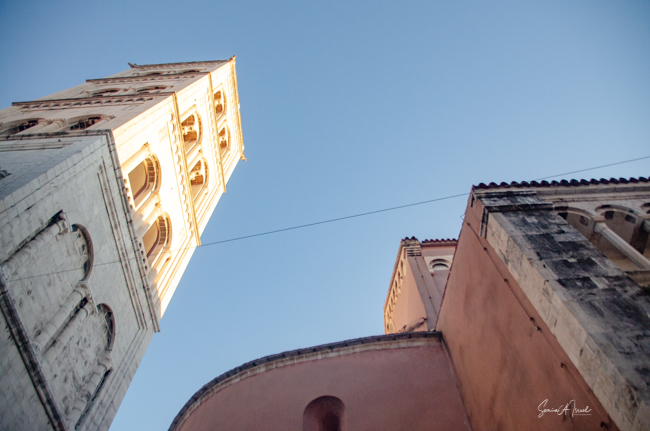

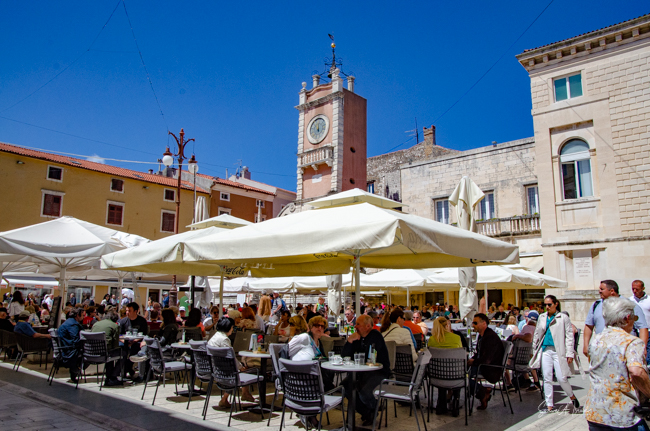


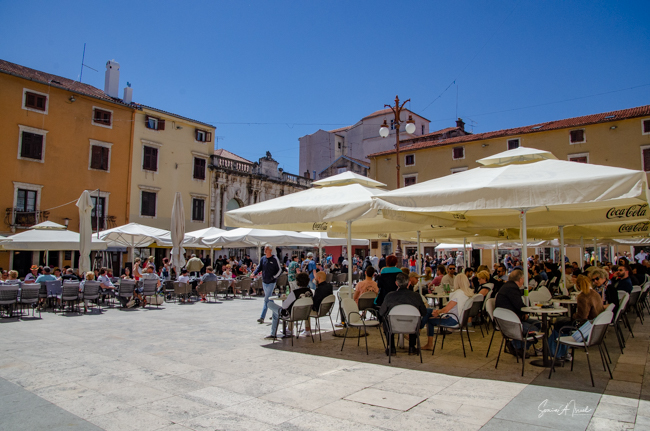

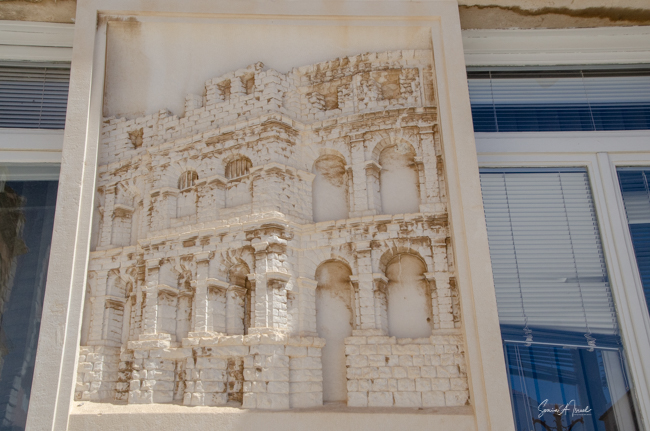
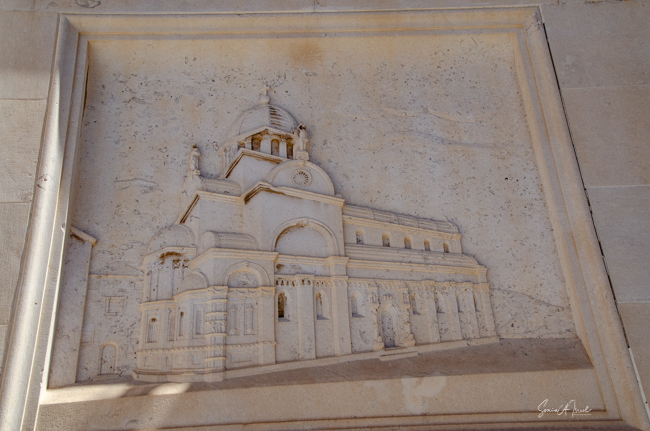

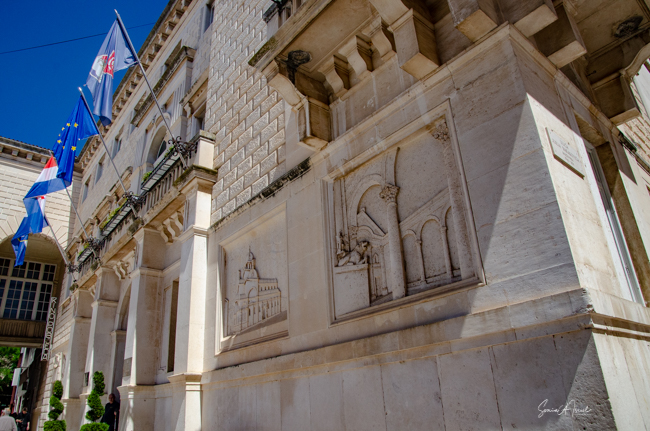
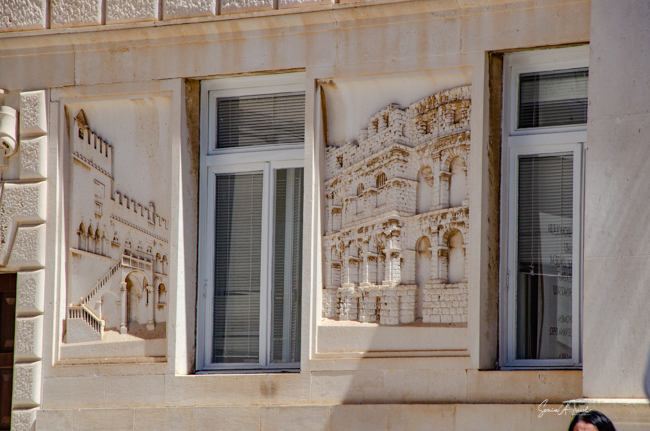


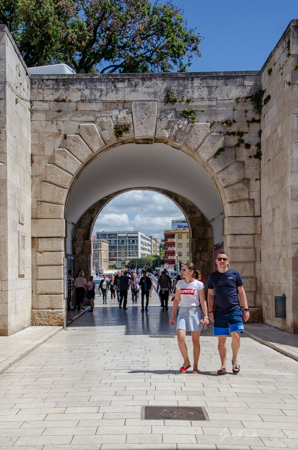
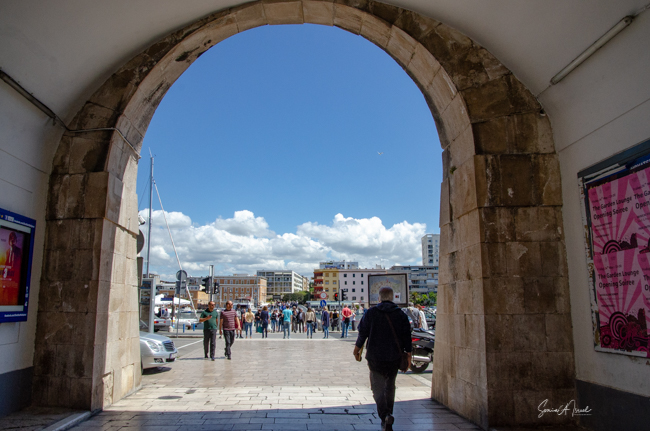
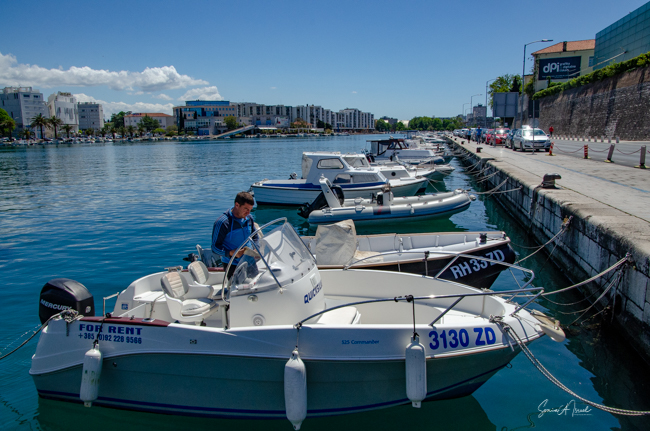
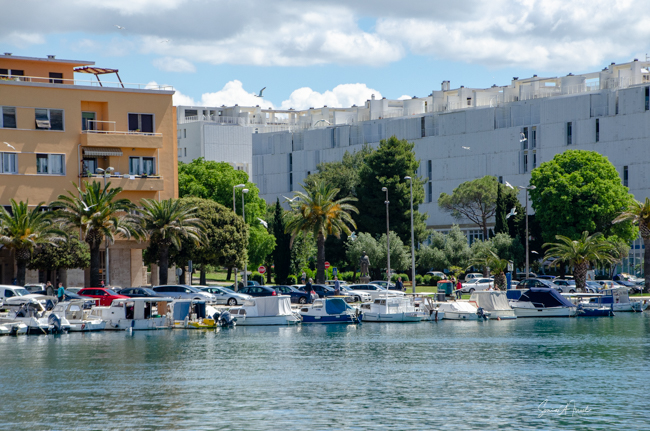
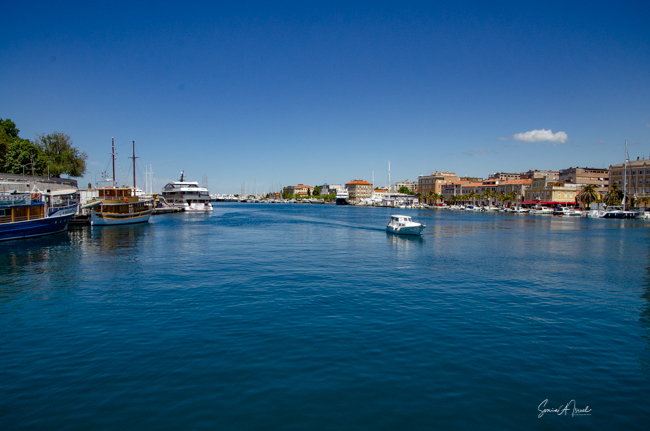
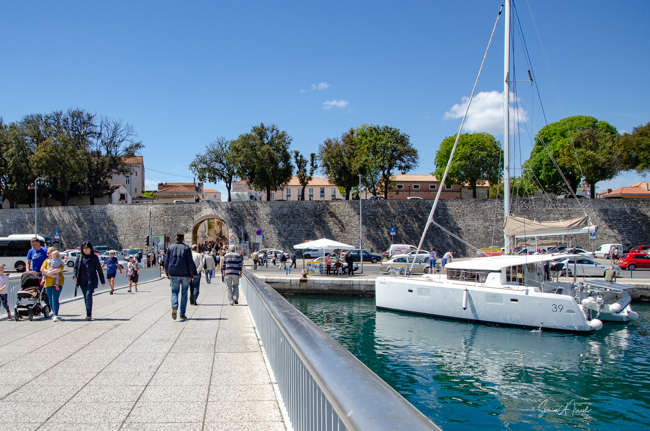
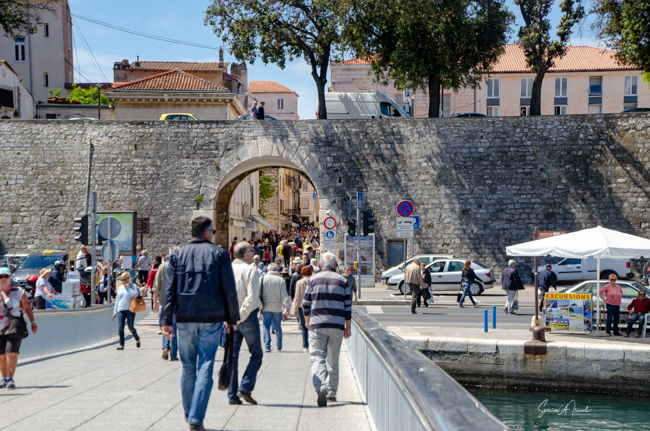







Phillip :)
Hi Sonia, I’m so glad You had a great time in our charming town. It was a wonderful read.
All the best,
Filip 🙂
Agata
Great post!
I was at Plitvicka park end of July, so beautiful, we skipped the organ for lack of time, but it is something I want to see, absolutely… and i am preparing Bruschette right now!
Agata your guide in Catania 😀
Angela Armass
Thank you, I love traveling with you!
Frances Gillin
Beautiful. Your descriptions are wonderful. Thanks and lots of love and hugs. Fran. I was in Croatia a few years ago and it was wonderful. Not Zadar.